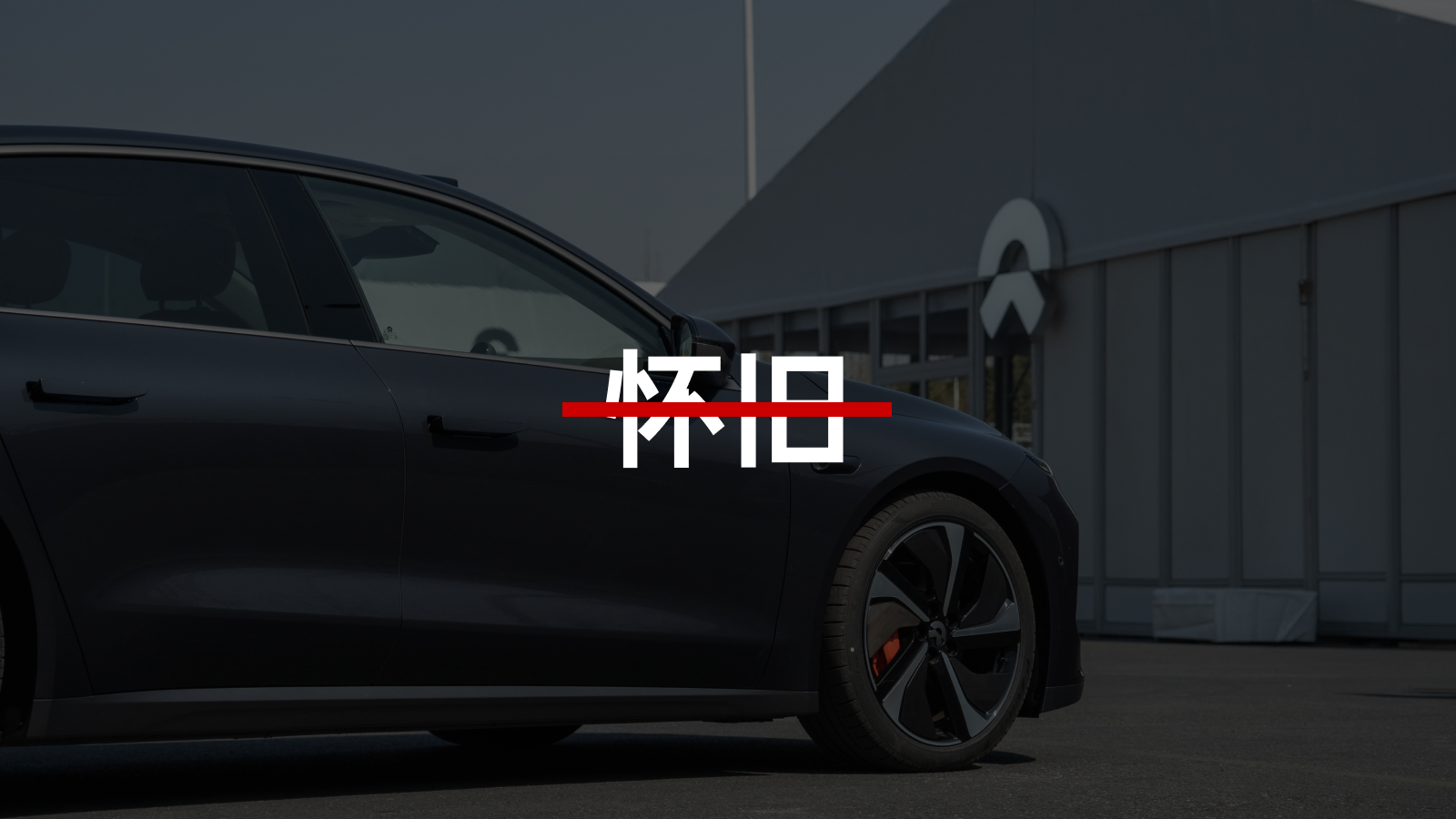On 2021 NIO Day, Li Bin made a statement that sparked a great controversy online. He said:
“I just don’t understand why people are still buying gasoline cars. Only those who are very nostalgic would buy them.”
The biggest controversy in this statement is that not all users at present agree that electric cars surpass gasoline cars in all aspects. However, when Li Bin made this statement, the first product of the NIO NT 2.0 platform, the ET7, had not yet officially debuted. And now, 14 months after the release of the ET7, we finally have the opportunity to experience this car first-hand.
So, taking this opportunity to test drive the ET7, let’s take a closer look at Li Bin’s statement. What product strengths does the ET7 have to give Li Bin such confidence to make such a statement? As the first product of the NIO NT 2.0 platform and NIO’s first sedan, can the ET7 convince users to give up their 56E (BMW 5 series, Audi A6, Mercedes-Benz E-Class) cars and choose it instead?
Familiar Yet Fresh
I believe you are already familiar with the exterior of the NIO ET7. Before today’s test drive, the appearance and interior of the NIO ET7 had already been unveiled several times at major car shows. However, in the previous appearances, almost all of them were in Antarctic Blue paint with 21-inch carbon fiber aluminum alloy wheels. Even with the most handsome color scheme, prolonged exposure to it may still lead to aesthetic fatigue.
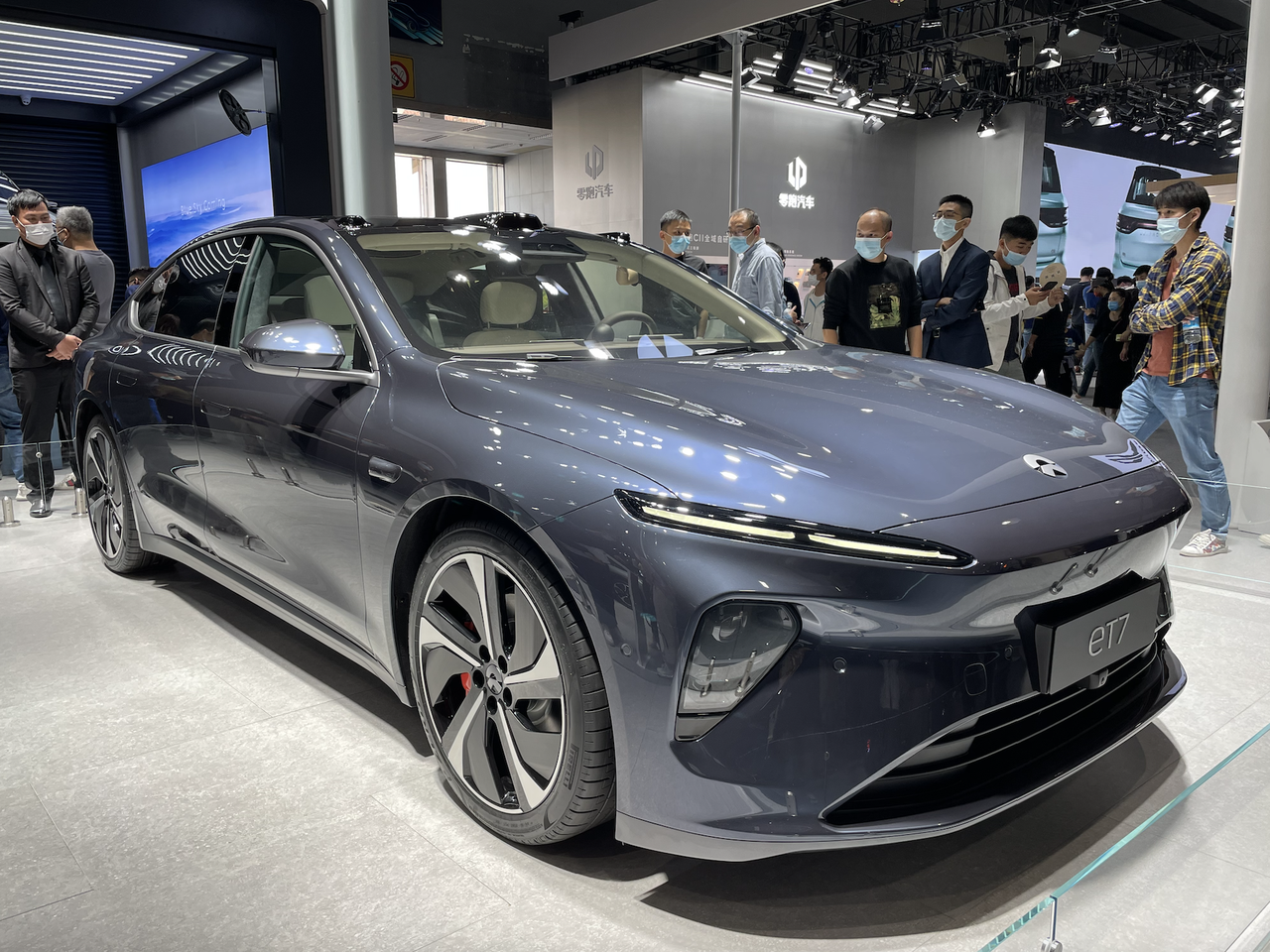
Moreover, the exhibition cars were also surrounded by a half-meter fence and security personnel. One of the furthest distances in the world, it seems, is the half-meter gap between us and the ET7.
But in today’s test drive event, it was rare to see various paint and wheel combinations of the NIO ET7 at the same time. So, let’s take a closer look at which combination catches your eye.
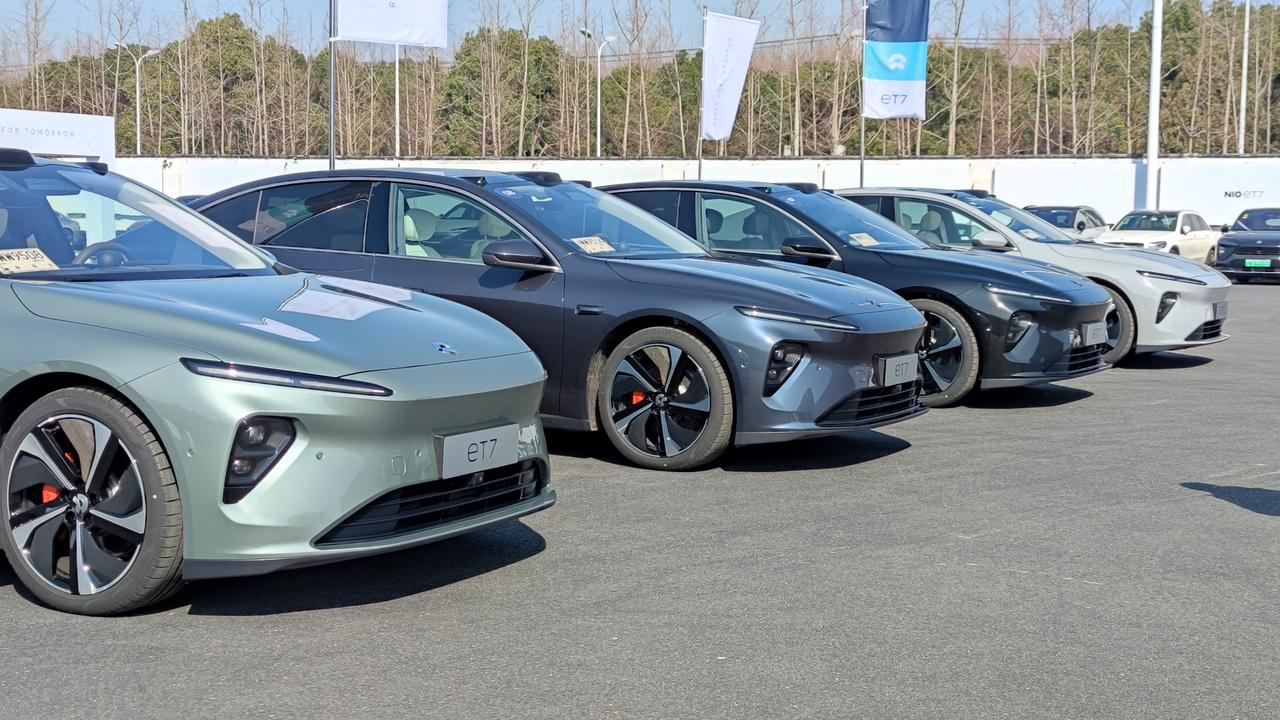
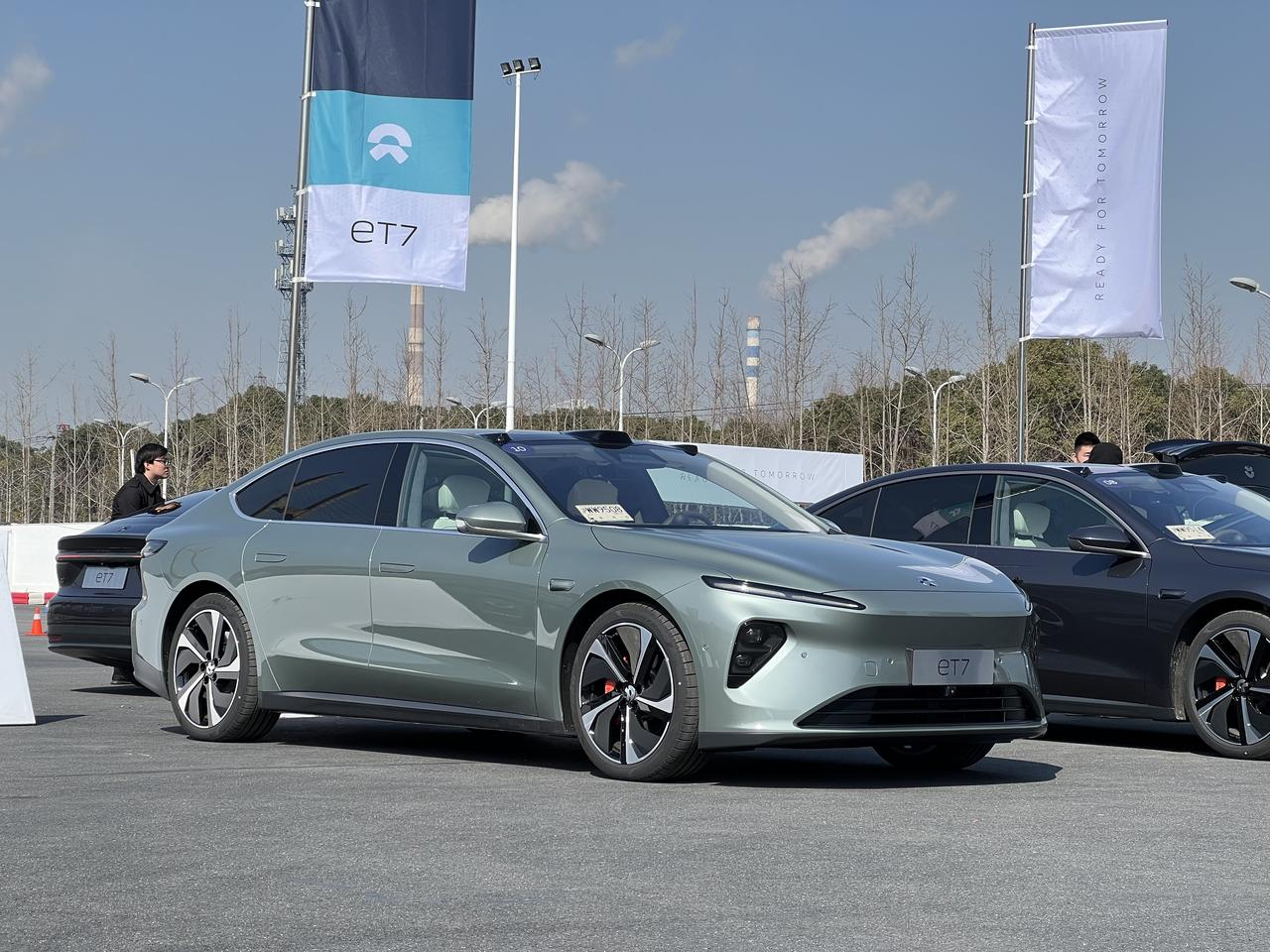
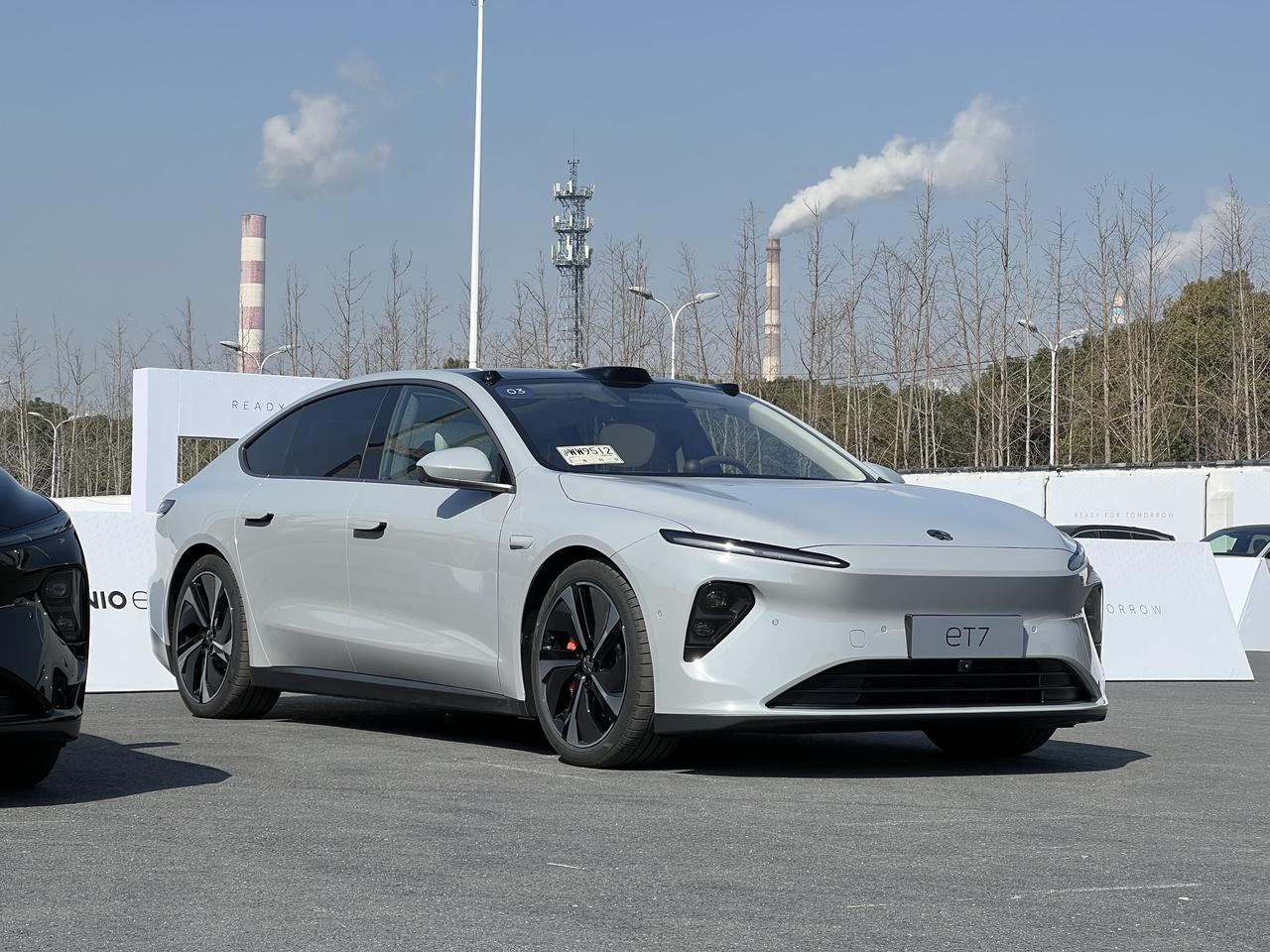
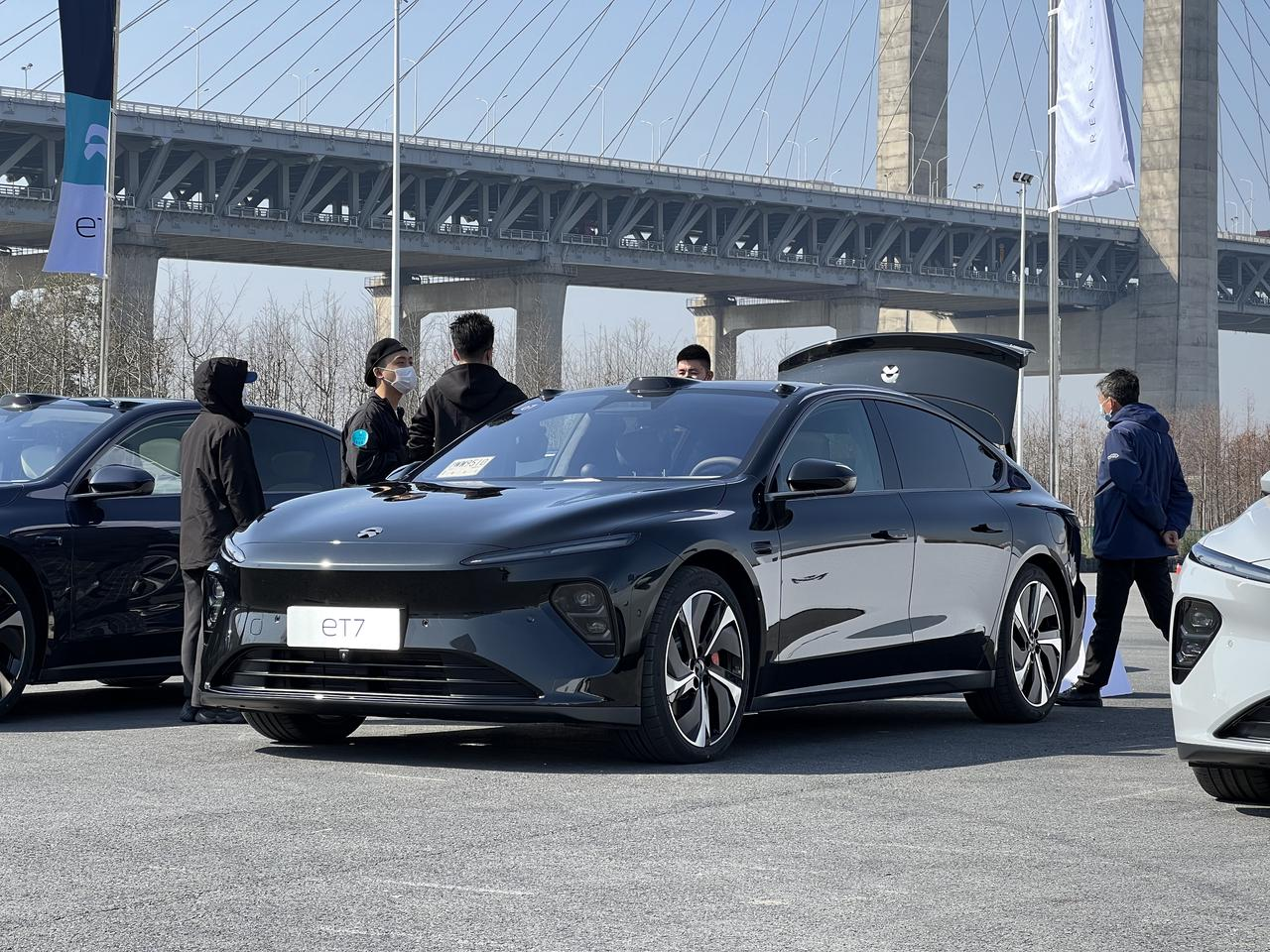
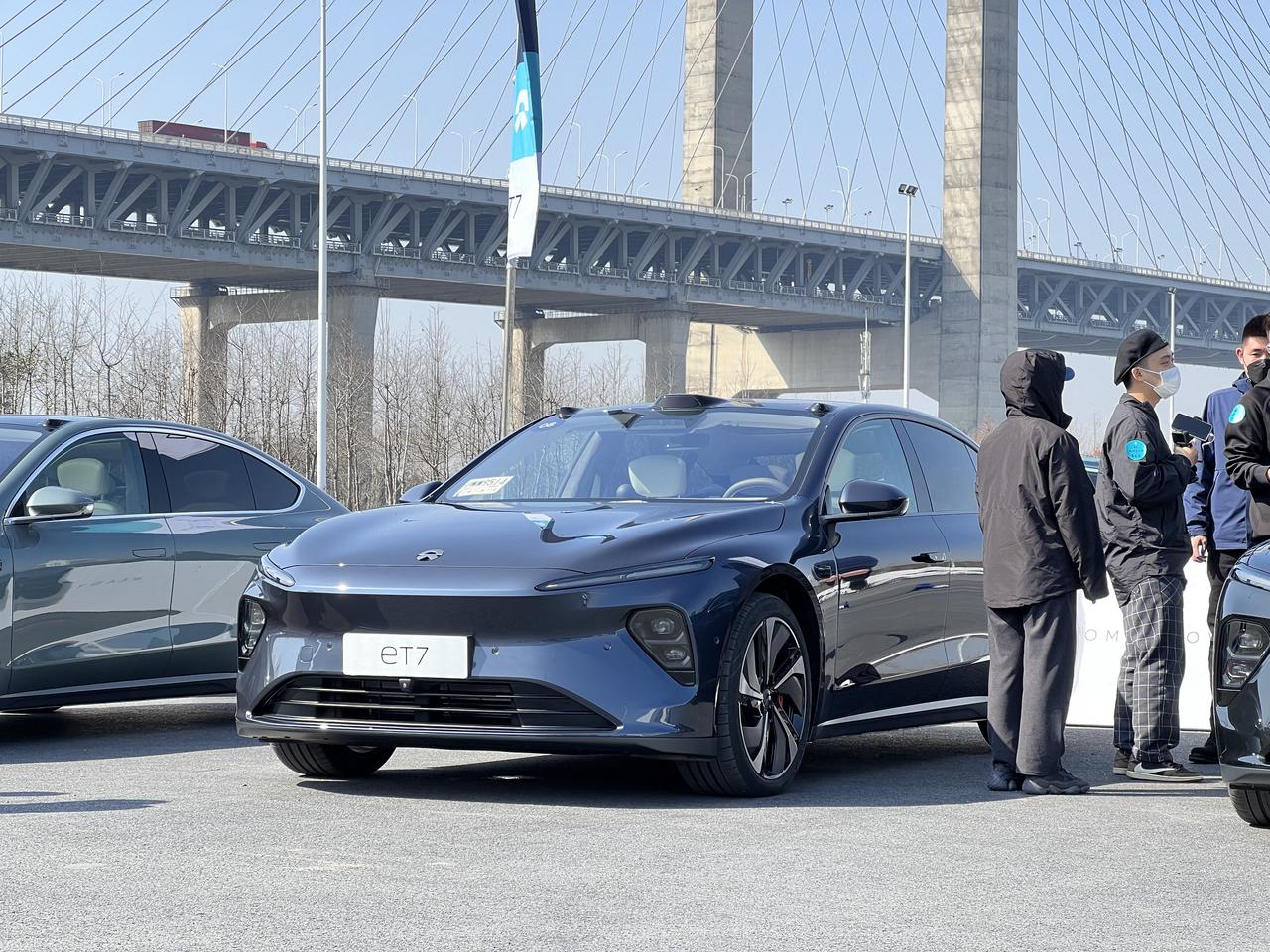 Because the test drive cars on site are all equipped with 21-inch wheels, the four car paints match perfectly and convey a powerful presence. We are also looking forward to seeing the posture of 20-inch wheels in the future.
Because the test drive cars on site are all equipped with 21-inch wheels, the four car paints match perfectly and convey a powerful presence. We are also looking forward to seeing the posture of 20-inch wheels in the future.
In terms of size, the ET7 is 5,101 × 1,987 × 1,509 mm in length, width, and height respectively, which is the same size as the domestic extended version 56E.
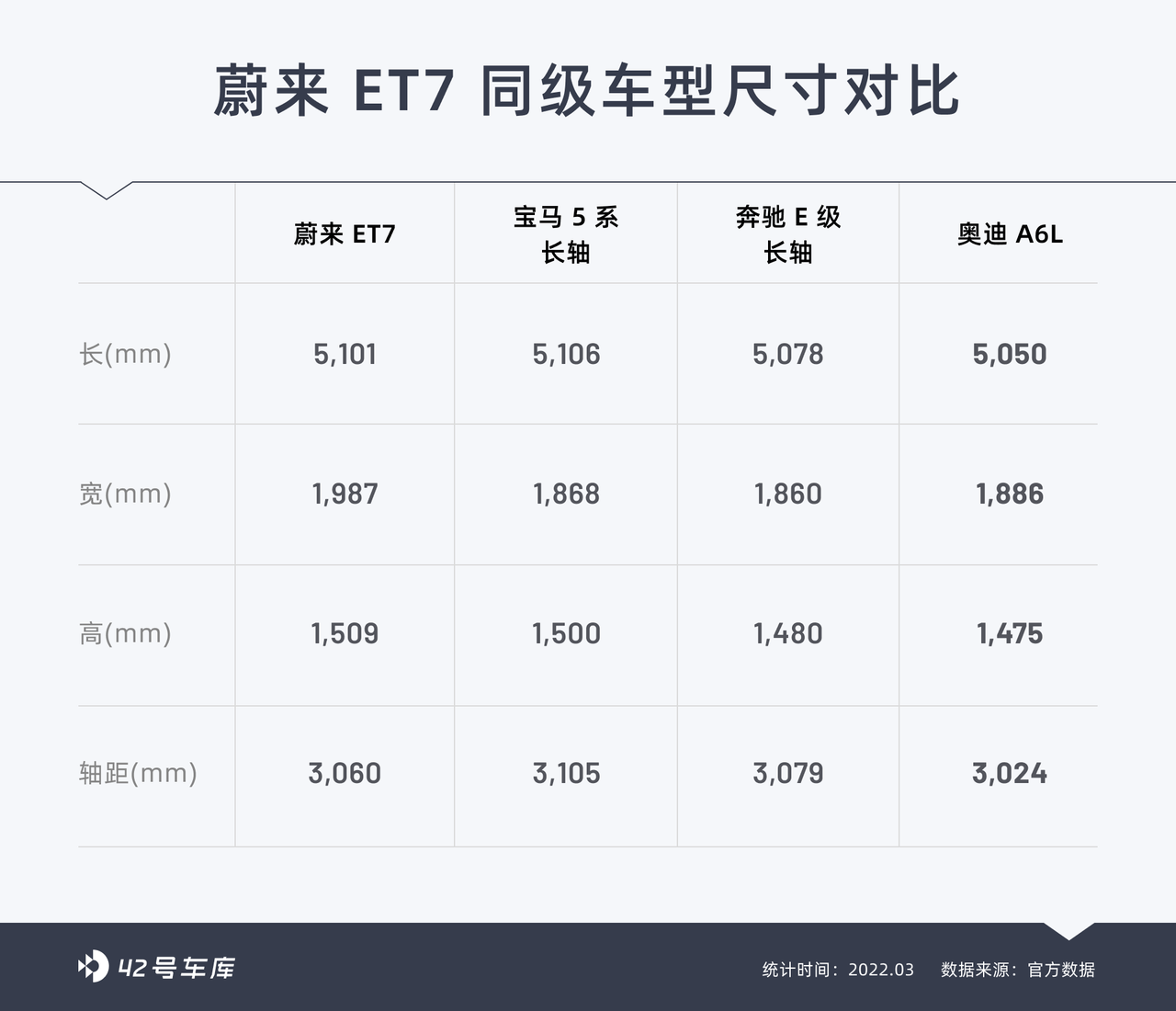
The difference is that the ET7 adopts a sleek design. At this height, it is extremely demanding to create a beautiful sleek design, but you can always trust NIO’s design expertise.
The waistline gradually rises from front to back, accompanied by a low ground clearance and 21-inch large wheels, which effectively reduces the vehicle’s heaviness and creates a stronger sense of sportiness.
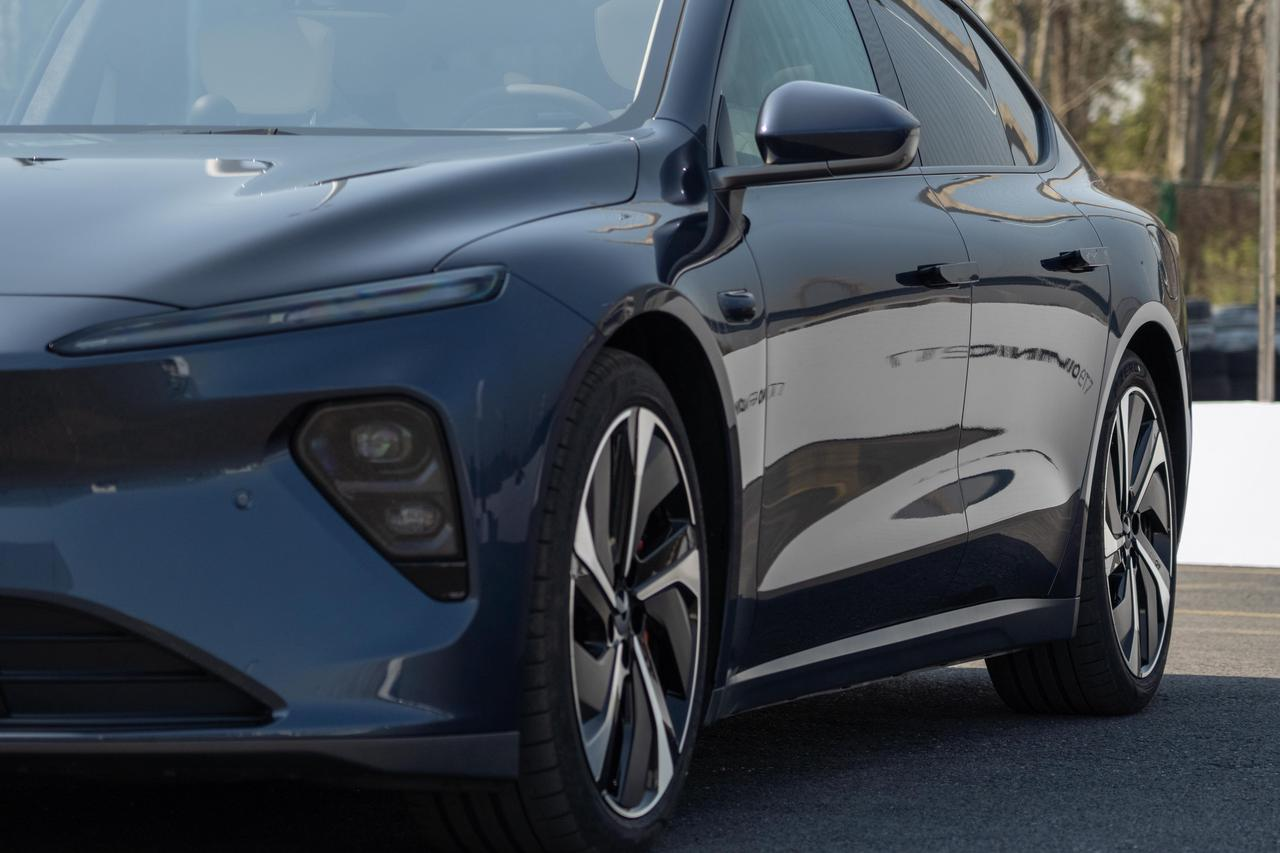
Here is also a recommendation for those who have not yet decided on the color of their pre-ordered car. You can try the aurora green paint with low-drag 20-inch wheels.
As a sedan, the ET7 is more concise while retaining NIO’s family-style front face design. The front face has no excessive color matching or chrome decoration. Compared with NIO’s SUV series, the front face is more closed and more technological. The aurora green paint can highlight the personality and strengthen the vehicle’s technological attributes.

The 20-inch low-drag wheels are also a compromise choice for energy consumption, comfort, and appearance.
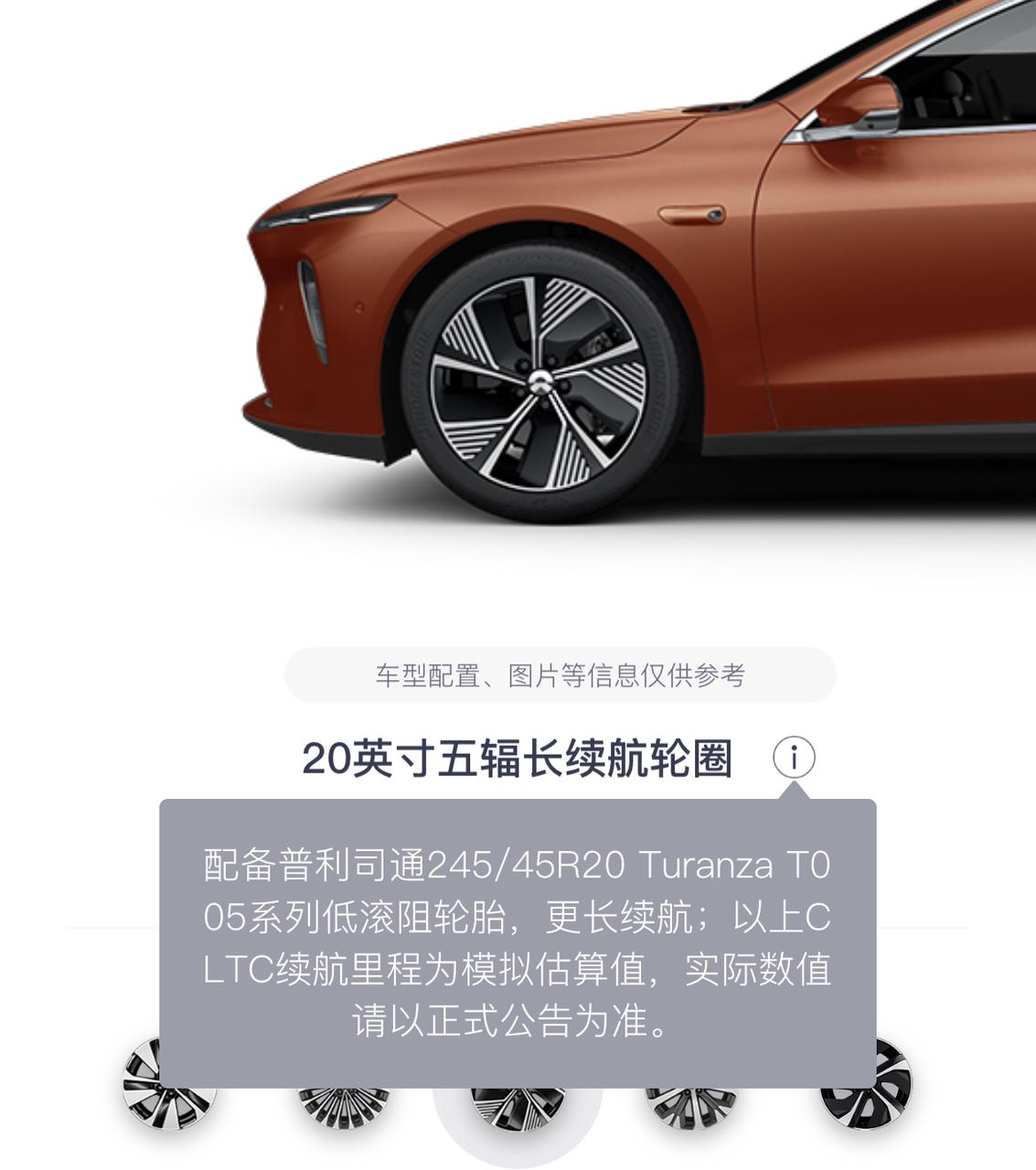
In terms of car design, the protruding lidar on the roof and the two 8 million pixel cameras on the left and right have always been controversial. I will not comment too much here. Compared with other models with roof-mounted sensor layouts, it can be said that the design given by NIO is the best compromise between function and design.
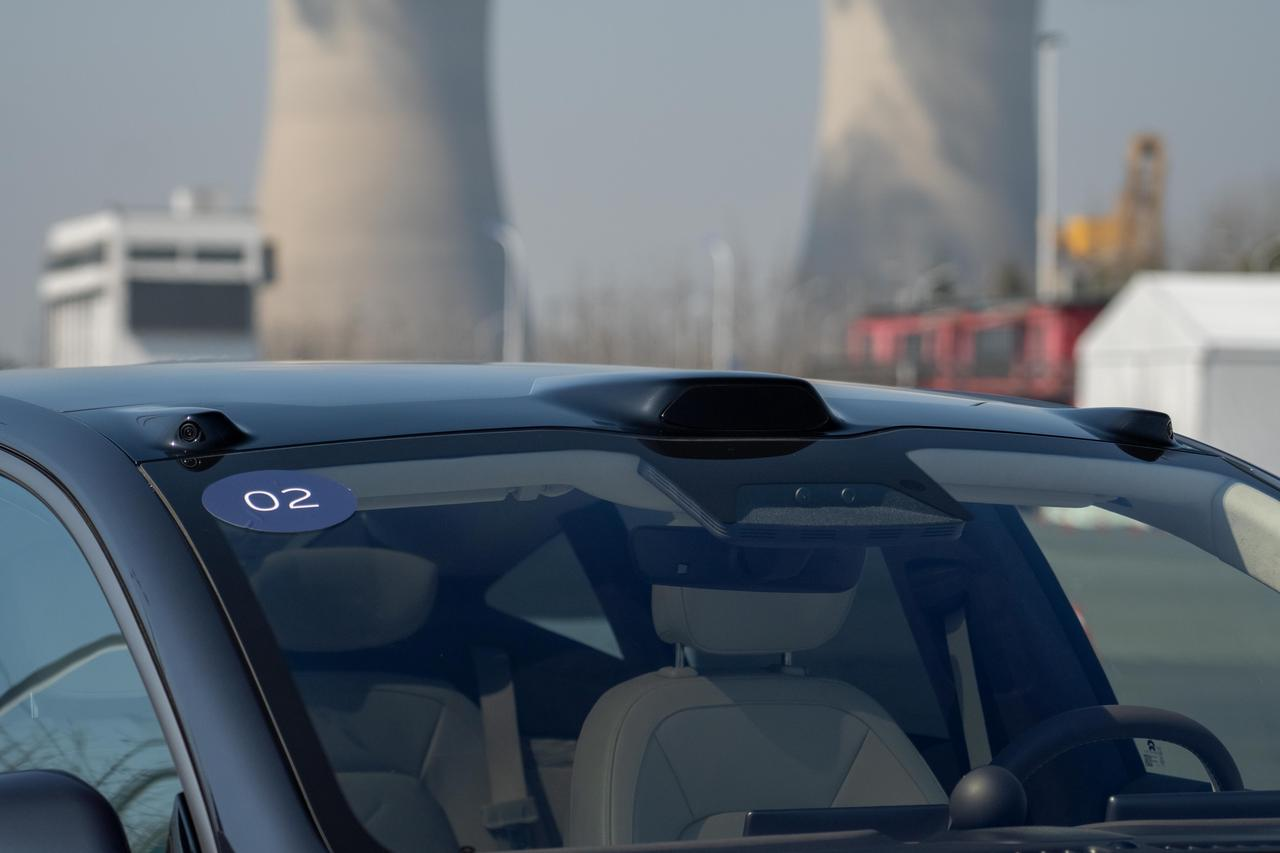
There is also a clever design point, which is the visual camera and high brake light at the tail. Traditional models usually have an “shark fin” antenna arrangement with a device on the roof towards the rear. The high brake light of the NIO ET7 is independent of the vehicle body and integrates a rear visual camera, which is similar to the stingray in the animal kingdom.## Conciseness is the main theme
Interior Design
Opening the car door and sitting in the driver’s seat, the first thing that catches your eye is the interior design layout of NIO. However, there have been significant changes in style, starting from the points that are within our reach.
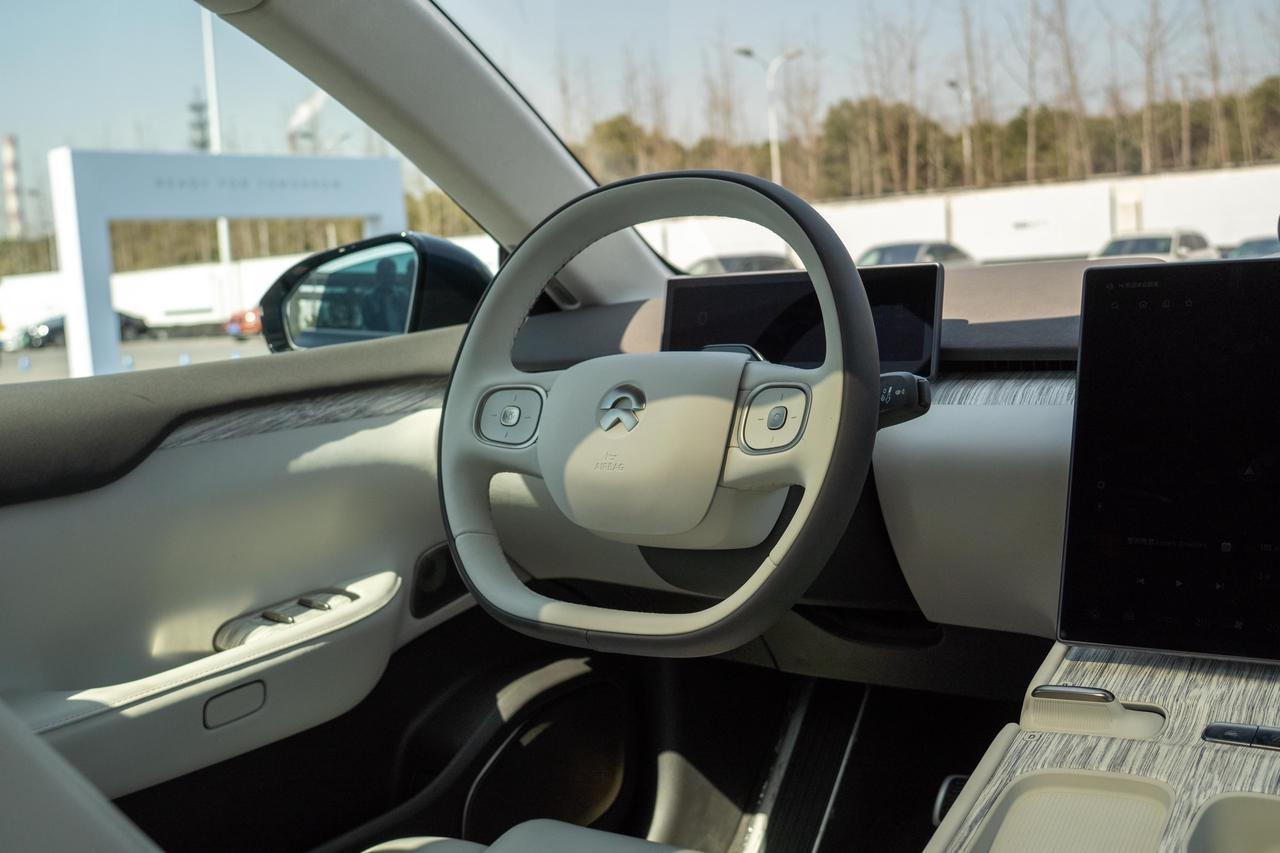
Firstly, the style of the steering wheel has changed from a three-spoke design to a two-spoke design. The number of buttons on the steering wheel has also been simplified from 7 on one side to 5 on one side. In addition, except for the central button, the icons of the other buttons have been removed accordingly. In actual use, after a simple adaptation, they can still be used proficiently.
At the rear of the car, the trunk of the NIO ET7 is also a point of concern for many people. Unfortunately, although the NIO ET7 is a fastback model, the trunk does not have a hatchback opening, so the opening is not considered large.
Regarding the trunk space, due to the length of the car, the depth is still relatively excellent, but the overall floor of the trunk is relatively high, and there is almost no storage space below the floor. In addition, the rear seats do not support folding, so the practicality of the trunk is a weak point of the NIO ET7.
When opening the car door, the improvement on the door handles is worth mentioning.
Originally, whether it was the ES6, EC6, or ES8, they all had single-sided pop-out door handles. Often, this kind of door-opening method would feel particularly awkward when pulling the car door open. It feels like you are pulling the easy-to-tear line on a paper wrapper.
Now, the NIO ET7 has a full-length pop-out door handle, which is much smoother to use compared to the current NIO models on sale. It is worth mentioning that the back of the handle of the ET7 has touch sensing. Even if you don’t make the pulling motion, but just touch the back of the handle with your hand, the door will automatically pop open.
In addition, the NIO ET7 is equipped with electric suction doors as standard across the range, so you only need to gently close the door when closing it, which is also an advantage in configuration compared to same-level models.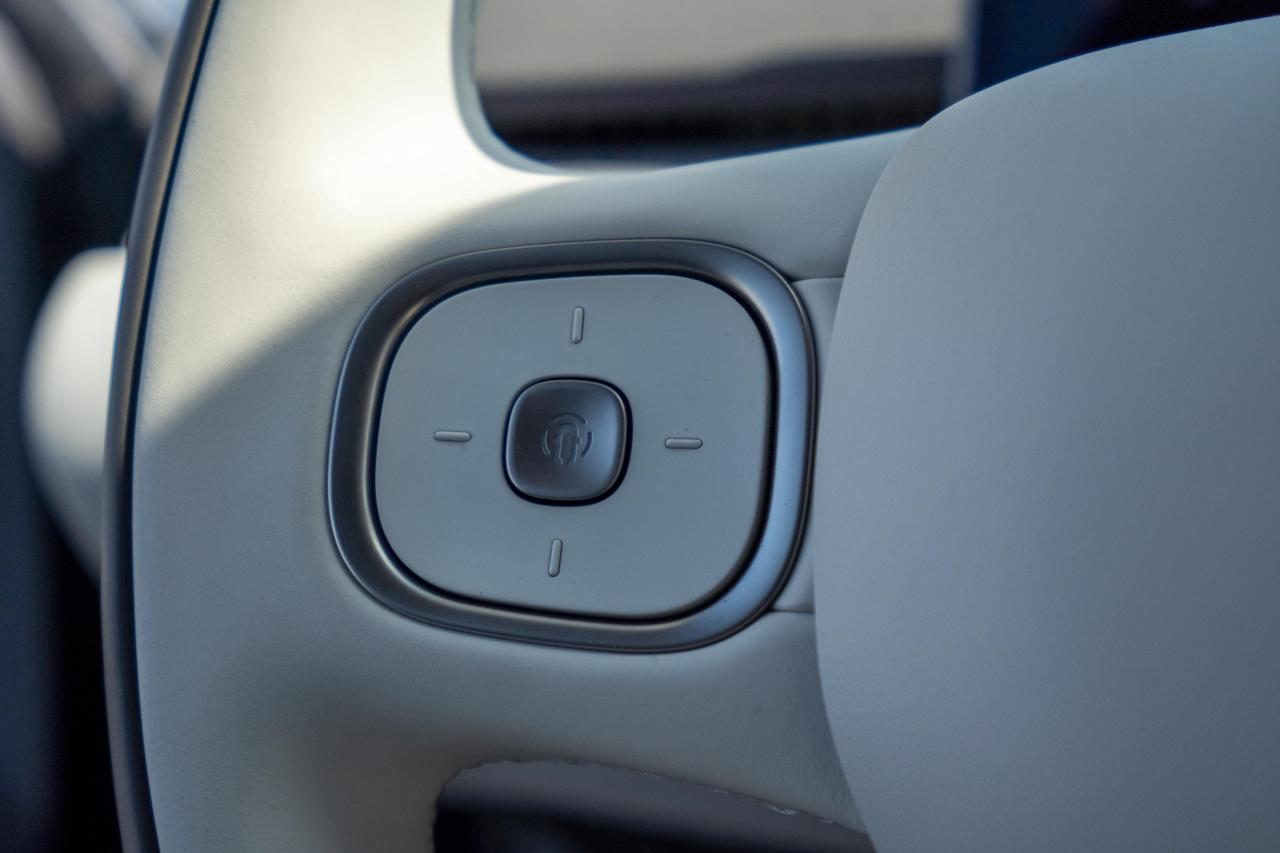
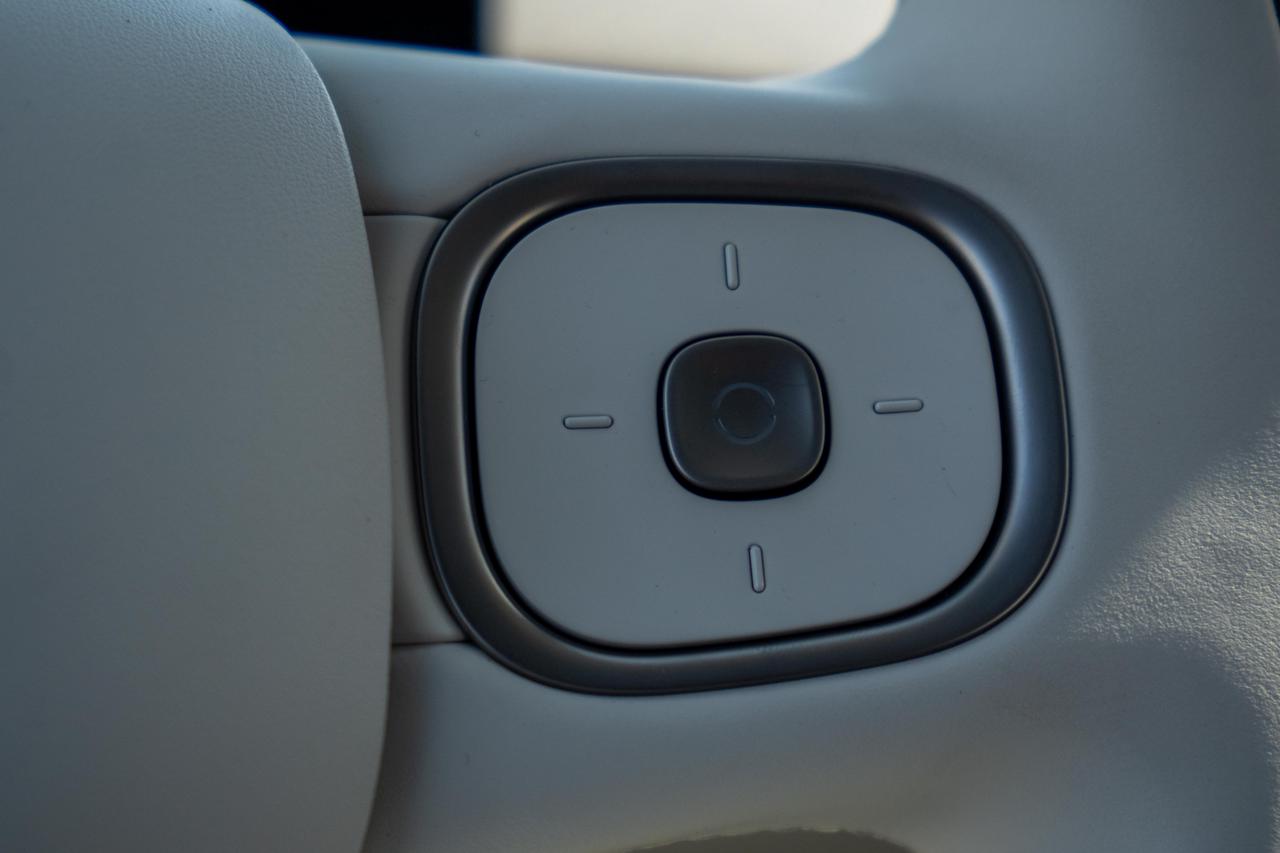
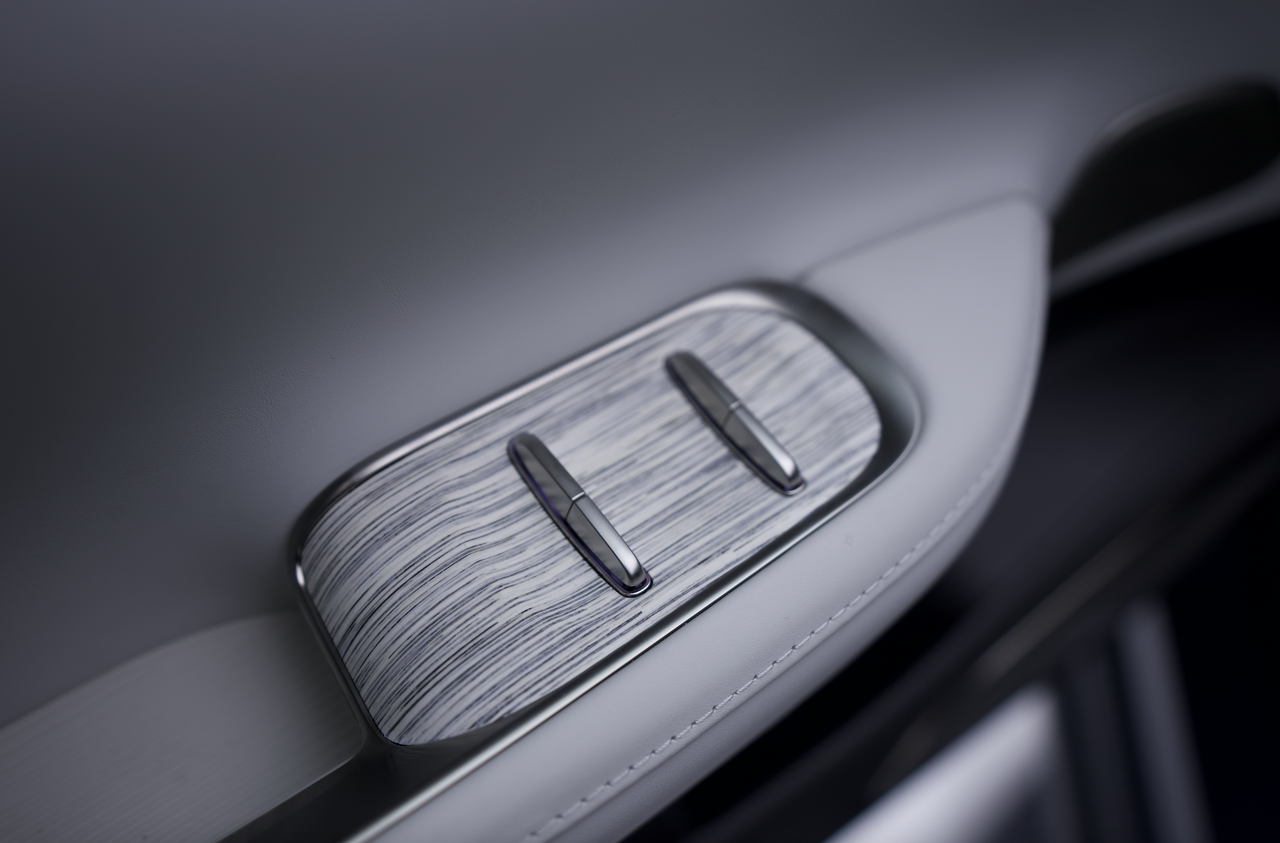
The control buttons on the car doors have also been simplified. Firstly, the physical button for adjusting the rearview mirror has been integrated into the car’s touchscreen. Many people think that removing the physical adjustment button compromises its practicality. However, after using Tesla Model 3 and Xpeng P7 without physical buttons for a long time, I found that adjusting the mirror mainly needs to be done when reversing and switching seat positions for different heights of drivers.
Therefore, if reasonable reverse automatic tilt and deep association between rearview mirror adjustment and seat memory can be achieved, physical adjustment buttons are basically no longer necessary.
In addition, the window buttons of the ET7 have been changed to levers instead of the traditional push and pull buttons.
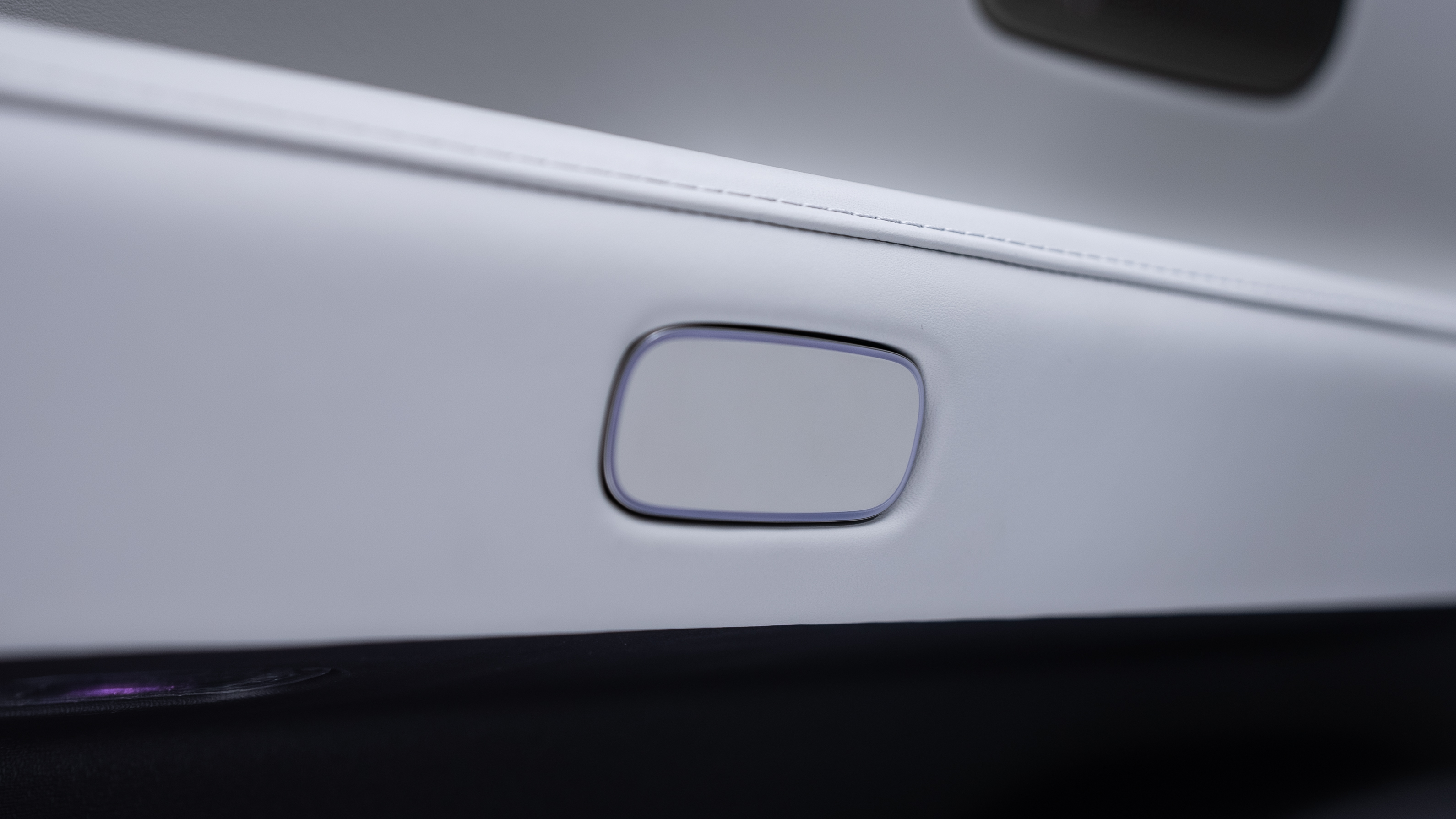
The door opening method has also been upgraded from manual to electric. However, there is no need to worry about being unable to open the doors in the event of a power failure, as ET7 has reserved mechanical handles for emergency use on all four car doors.
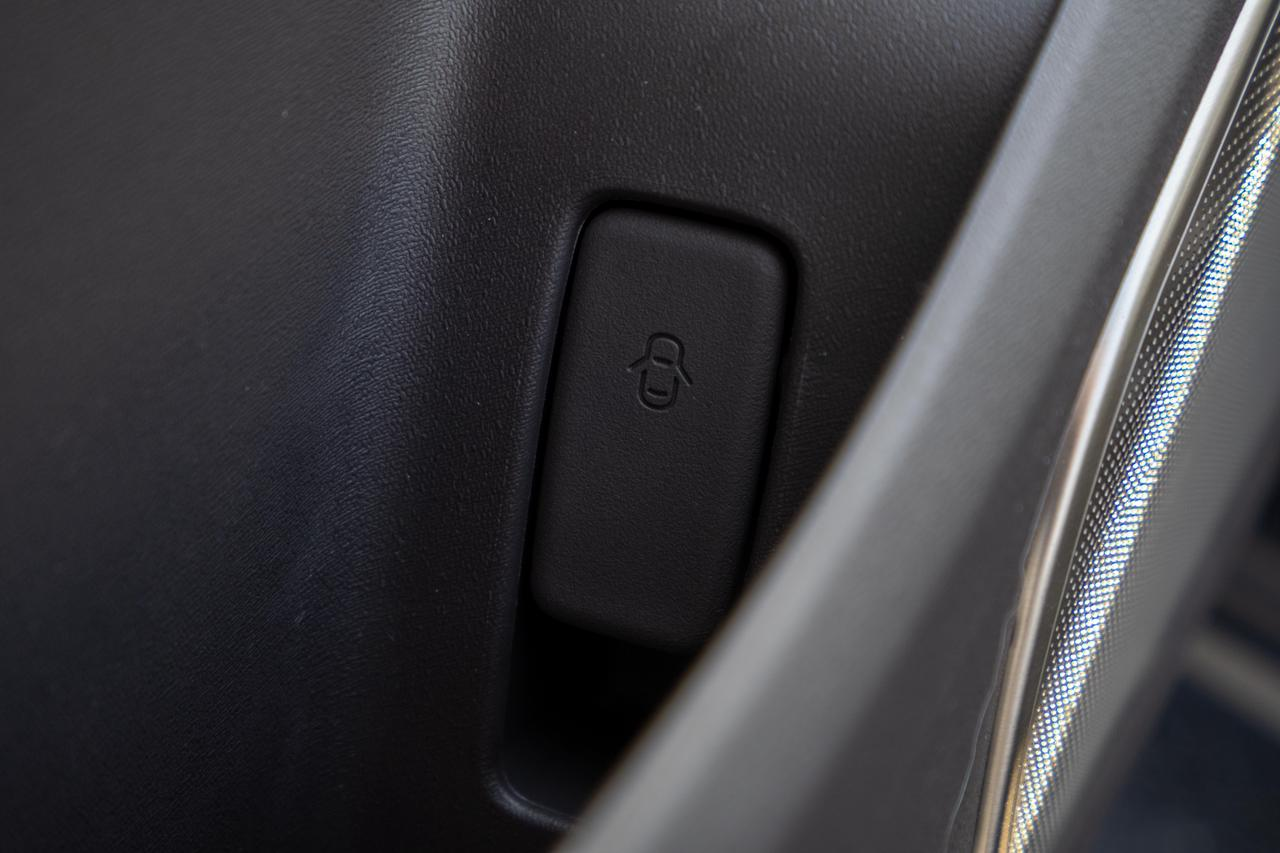
Let’s take a look at the center console. Due to the change from an SUV to a sedan, the thickness of the center console has also been reduced. In order to save space, the air conditioning vents adopt a hidden design, with adjustment methods similar to Tesla. The airflow direction and volume can be adjusted on the central control screen.
The karuun renewable rattan in the air conditioning vents has also improved the sophistication of the interior to some extent. Of course, the sophistication of the minimalist style is only NIO’s own understanding of the cabin. In my opinion, the ET7’s interior does achieve its own definition of spacious, comfortable, sophisticated, and warm.
However, minimalist style interiors are not loved by everyone, and I believe that many friends prefer cabins with adjustment buttons like those found in Porsche.
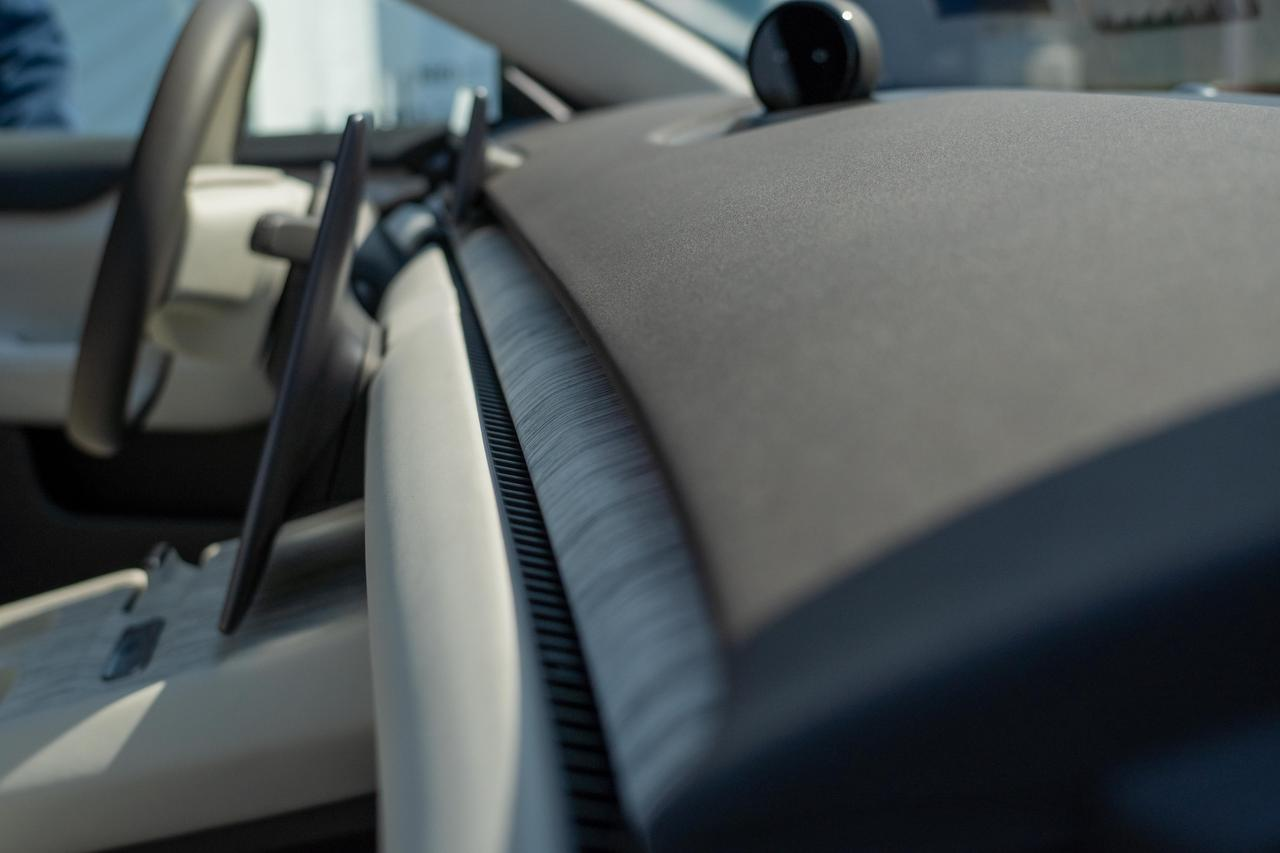 The central console of ET7 gives the impression of little change, as the 12.8-inch touchscreen remains in a vertical design. Navigation is undoubtedly convenient, but the view inside the car is not as good as that of the landscape-mode model.
The central console of ET7 gives the impression of little change, as the 12.8-inch touchscreen remains in a vertical design. Navigation is undoubtedly convenient, but the view inside the car is not as good as that of the landscape-mode model.
Fortunately, the screen material has been upgraded to AMOLED, with the narrowest frame reducing to 5.5 mm, greatly reducing the black edges top and bottom of the movies with a resolution of 1728*1888 and a contrast ratio of 100,000:1 plus 8155 chips, providing a satisfying user experience.
In response to the vertical screen, NIO explains that the immersive experience inside the car will be achieved through AR and VR devices. We may also look forward to the launch of the ET5 model, which is expected to bring a brand-new experience to the cabin.
According to official statements, the 360° viewing function will be significantly improved after the upgrade of the 3-million-pixel cameras from Sony in the ET7 in-car system. However, we have not noticed much enhancement in the actual experience, which may be due to version 0.7.0. We hope that the effect will be better after the official delivery of the vehicles.
Another fascinating feature of the ET7 car system is its shortcut function, which is also familiar to iPhone users. It helps to trigger a series of actions after a switch is turned on.
Similarly, the ET7 utilizes various sensors to perform custom operations. For example, if you set a shortcut for the air conditioner to turn on automatically when the temperature is higher than 25°C, the system will enable the air conditioning and set the airflow to the maximum to cool down quickly, as well as turn on the seat ventilation according to the pre-set temperature.
Due to the limited time on the test-drive site today, we did not have a comprehensive experience of this feature. We will examine carefully the convenience brought by these shortcuts when we take the ET7 home.
To compensate for the loss of the visual experience, we can rely on the auditory experience. The NIO ET7 comes with a Dolby Atmos 7.1.4 surround sound system, with a power of 1,000 W, and a mind-boggling 23 speakers, which is standard across the entire range.Believe that those who have experienced Dolby Atmos in the cinema must have a deep impression on this panoramic sound system, especially the promotional video played by Dolby before the movie, which really gives a sense of immersion. Whether it’s the sound of rain or the chirping of birds in the forest, it seems to be happening around you from all sides.
Similarly, in the NIO ET7, by clicking to play the 7.1.4-channel music album in the NIO Radio, we can enjoy high-quality music in the closed car space.
Close your eyes, and you can accurately judge which corner the drumbeat is coming from, where the singer is located, and the melody surrounding you. It is not an exaggeration to say that thunder from behind will make you feel it is going to rain soon; the sound of water from all around feels like the vehicle is leaking. We compared it with the Harman Kardon of the BMW 5 Series and suddenly felt that NIO had a trump card in its pocket.
With such high-quality sound, we can look forward to more 7.1.4-channel videos appearing in the in-car video software in the future, to make this sound system shine to the fullest.
Of course, for a good audio experience, the number of units and power are also the basis. Often, when we layout the audio in our home, the first thing we arrange is the sound-absorbing sponge kit. For vehicles, NVH is also crucial. Whether it is a track test drive or a road test drive, the feeling that ET7 gives me is one word – quiet.
From the moment you close the car door, you can feel that the obvious isolation between the car interior and the outside world, even when the vehicle is in motion, the suppression of wind and road noise is still good. I originally thought that this was partly due to the silent and comfortable tires, but when I got off the car and saw the Pirelli P ZERO, I couldn’t help but drive it aggressively.
“A Whole New Level”
Track Test Drive
When I first arrived in the ET7, I didn’t have much expectation for its handling. Because the entire interior design still inherits the family style of NIO, and the color matching seems to tell me that this car is not born for sports. Secondly, NIO’s EC6, which used to run on the NT 1.0 platform, has never established too much driving confidence with me, and its braking and handling performance are not up to its acceleration.Until I stopped the car on the departure line and pressed the accelerator pedal, experiencing the 0.98G instant acceleration brought by 850 N·m of maximum torque that pressed me tightly against the seat. Seeing the buffer zone ahead, I pressed the brake pedal all the way down, feeling the tires scratching on the ground. Before my brain could react, the vehicle had already reached the section of continuous slalom. Relying on intuition, I threw the car into the bend with a speed of 60 km/h, and the heavy steering wheel accurately controlled the front wheels to round the slalom. In just one minute, it completely changed my initial impression of ET7.
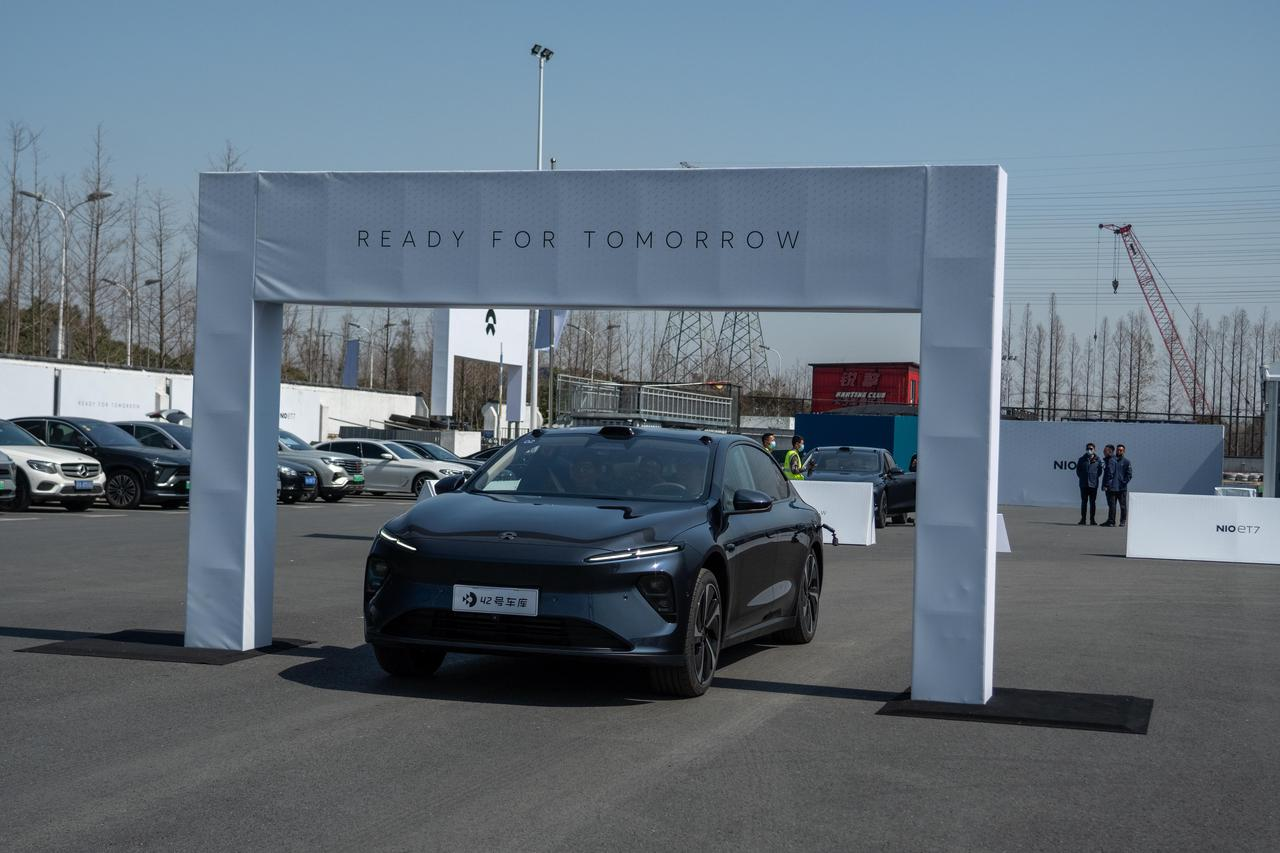
In just one minute, half-doubting, I took a BMW 530 Li and went through the same course again. With a roar from its 2.0T engine, it rushed past the end point of the straight acceleration segment, and the top speed of the 530 Li was 74 km/h. Compared with the ET7’s just-over-100-km/h top speed, it made me feel that the power of the 530 Li was lackluster. The data of ET7’s twin electric motors, with a maximum power of 480 kW, maximum horsepower of 650 hp, has already reached the level of M Power, AMG, and RS, and its price is only a fraction of theirs. Can we expect to see ET7 appearing in Horizon 5?
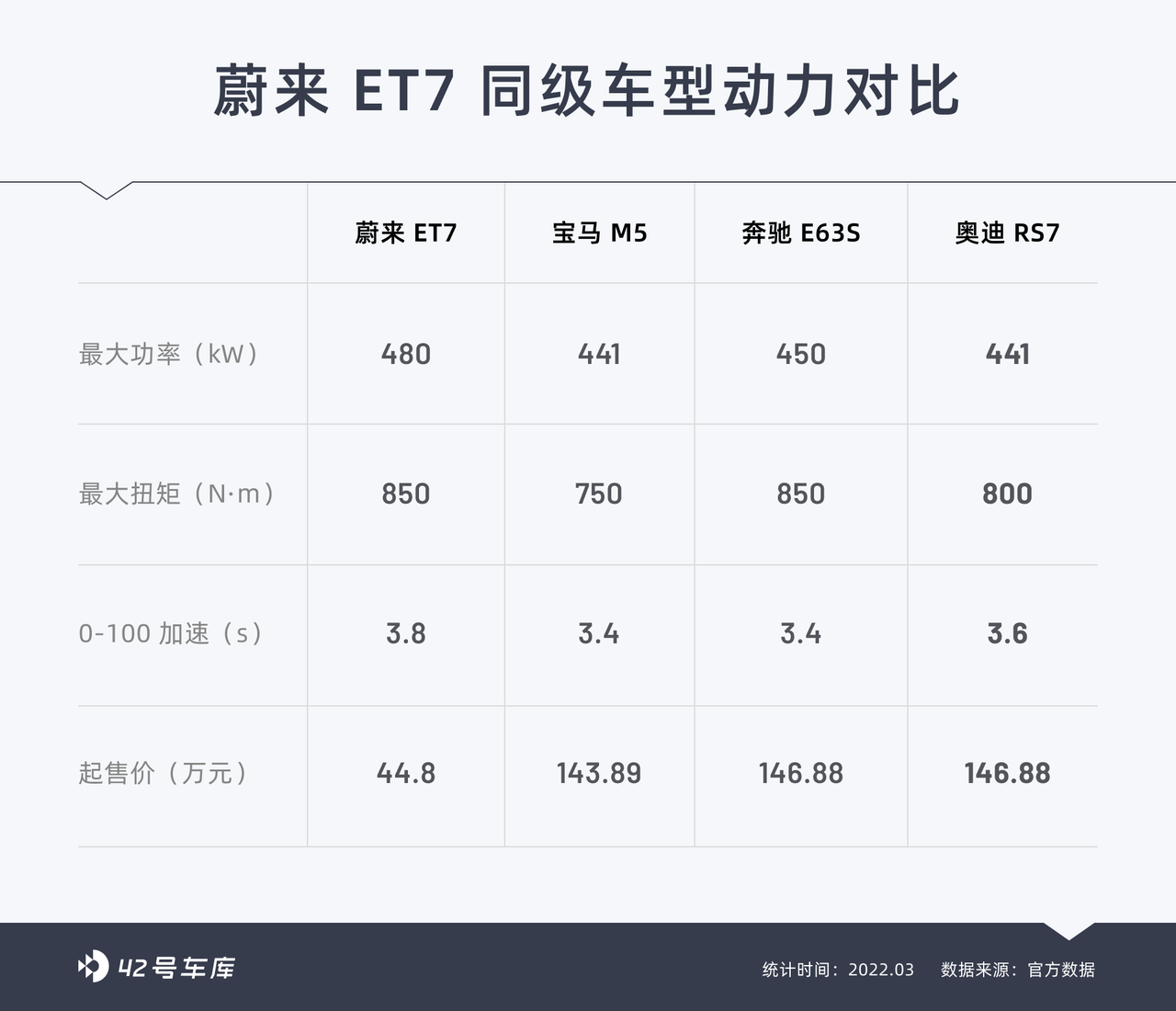
In the slalom section, the two cars gave me completely different feelings, and the 5 series, which is skilled in sports, gave me a feeling of a large car, and it has a greater amplitude compared with ET7 in the slalom. There is not much difference in the steering feel between the two cars. There are only small gaps in the range of 1-3 degrees in the middle, and when making large steering movements, the pointing accuracy and steering feedback will give people strong confidence.
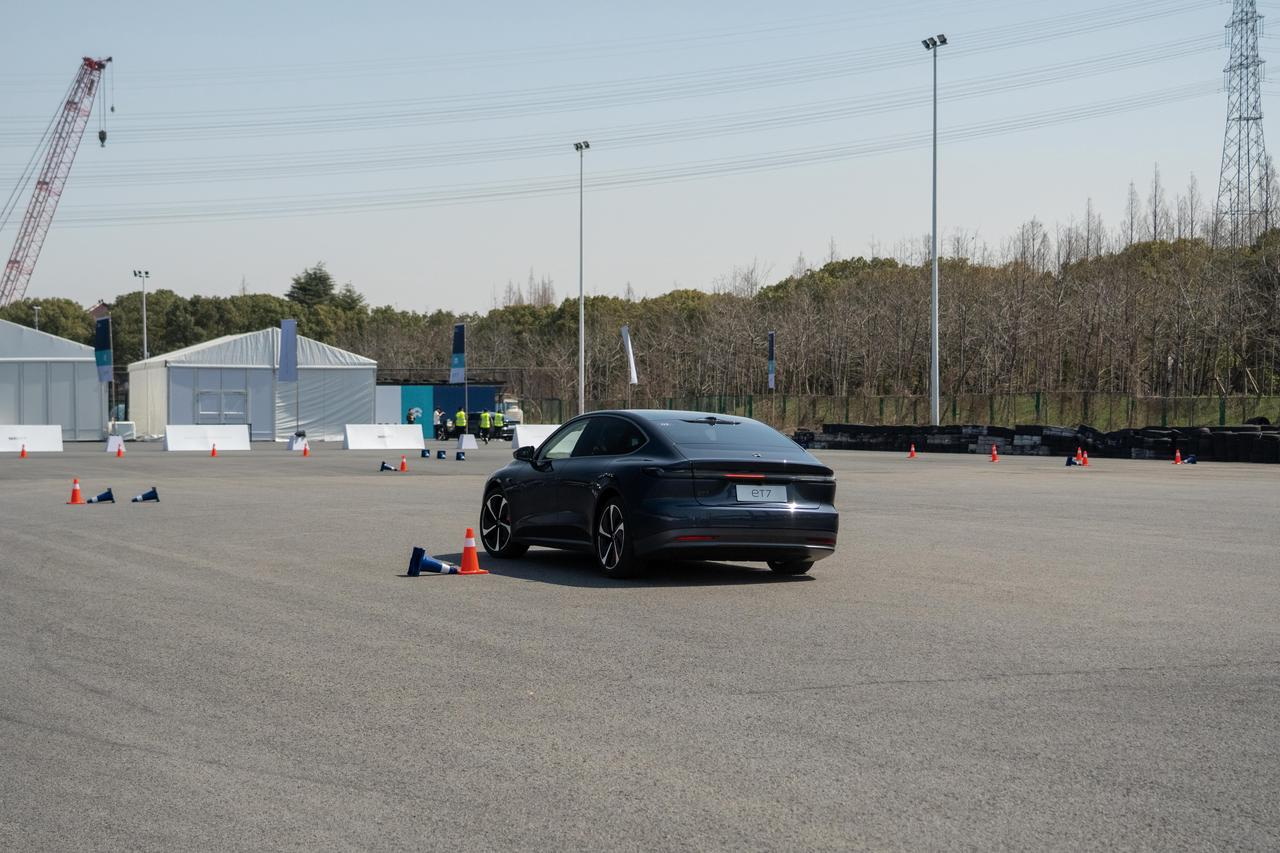
I have a small nitpick about the steering wheel: ET7 does not have a groove at the 3 and 9 o’clock positions. Therefore, when driving aggressively, the driver can only turn the steering wheel through grip and friction. However, considering that NIO ET7 is positioned more towards executive and older users, the lack of a groove is not a big deal.
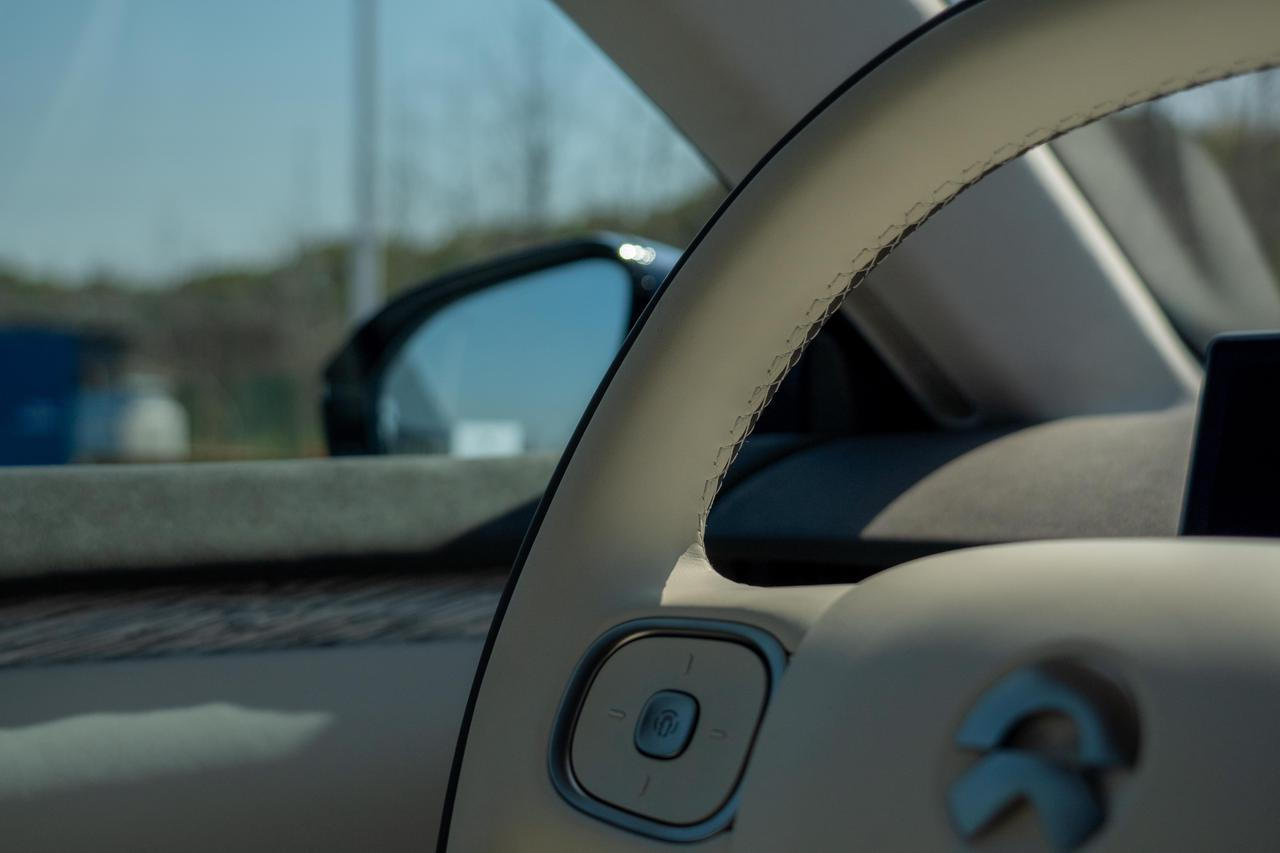
Comfort is no Problem
Dynamic ComfortFor the audience of ET7, nobody will be casually accelerating to 100 km/h on the road. On the road, driving strictly according to the speed limit is the intended scenario for this car. Driving out of the venue and onto the ground road, I pretended to be the owner of ET7 and felt it out for myself.
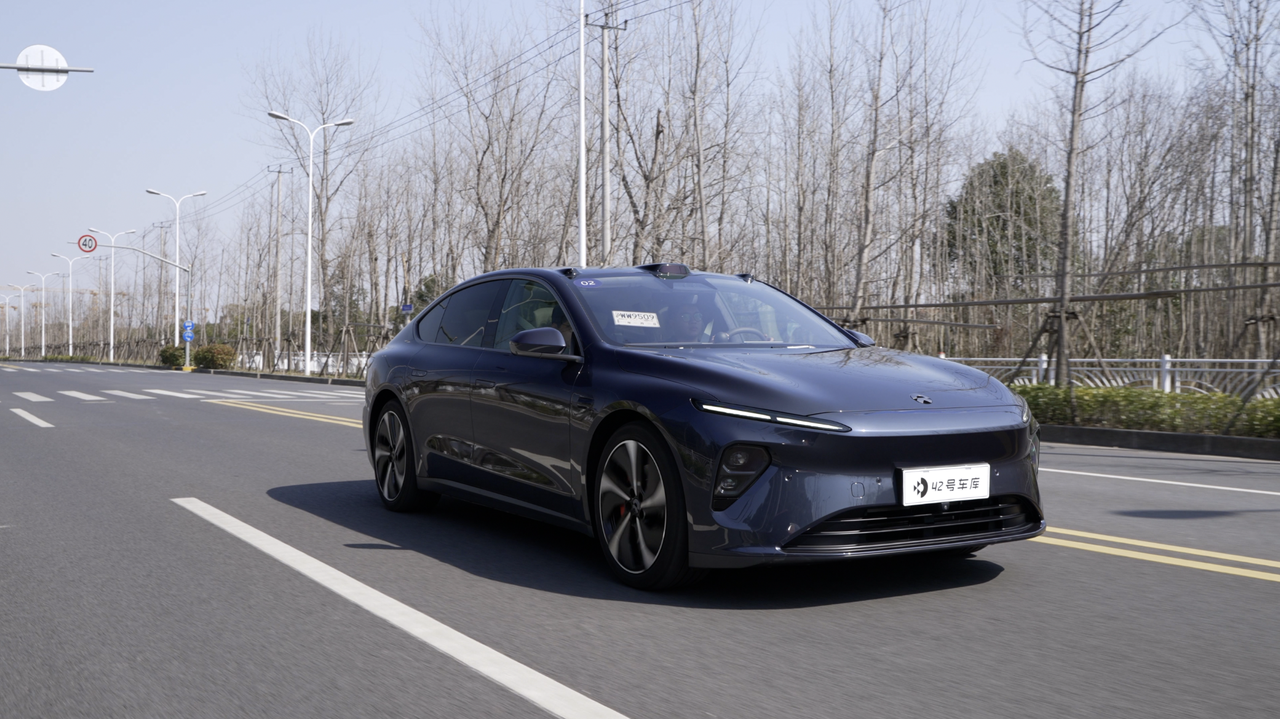
Originally I planned to test the suspension performance of the ET7 on the ground road, but the moment I drove out of the venue, I felt a strong sense of isolation. This isolation mainly comes from two aspects. Firstly, the quietness inside the car, despite the fact that all four tires that the vehicle comes in contact with on the ground are from Pirelli P Zero, the noise control of the entire car is still at a very high level. Cruising at 60 km/h through the noisy streets of the city, we can still talk normally in whispers. When you turn on the music, you won’t even notice buses and construction vehicles driving past. This feeling is like wearing noise-canceling headphones while walking down a busy road.
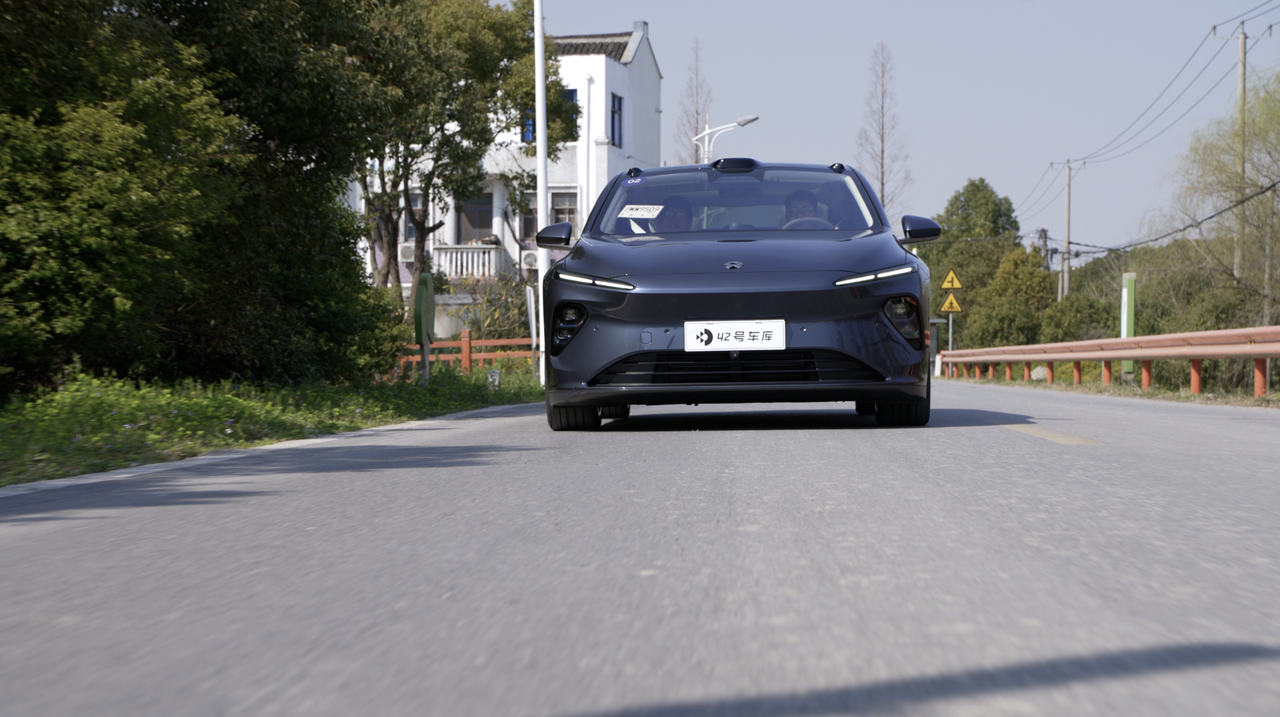
The second point is the chassis. Just now in the venue we already tried out the Sport+ mode, and had a certain understanding of its support and handling. Switching to Comfort mode on the road, the ET7 presents another character. It drives steadily on the road, and when encountering bumps or seams on the overpass, it can filter them out silently. When going over a large pothole or manhole cover at a relatively fast speed, the filtering of the ET7 is very clean and crisp, without any extra bouncing. The only bounce is like bouncing on a brand new mattress – it is clean and resilient.
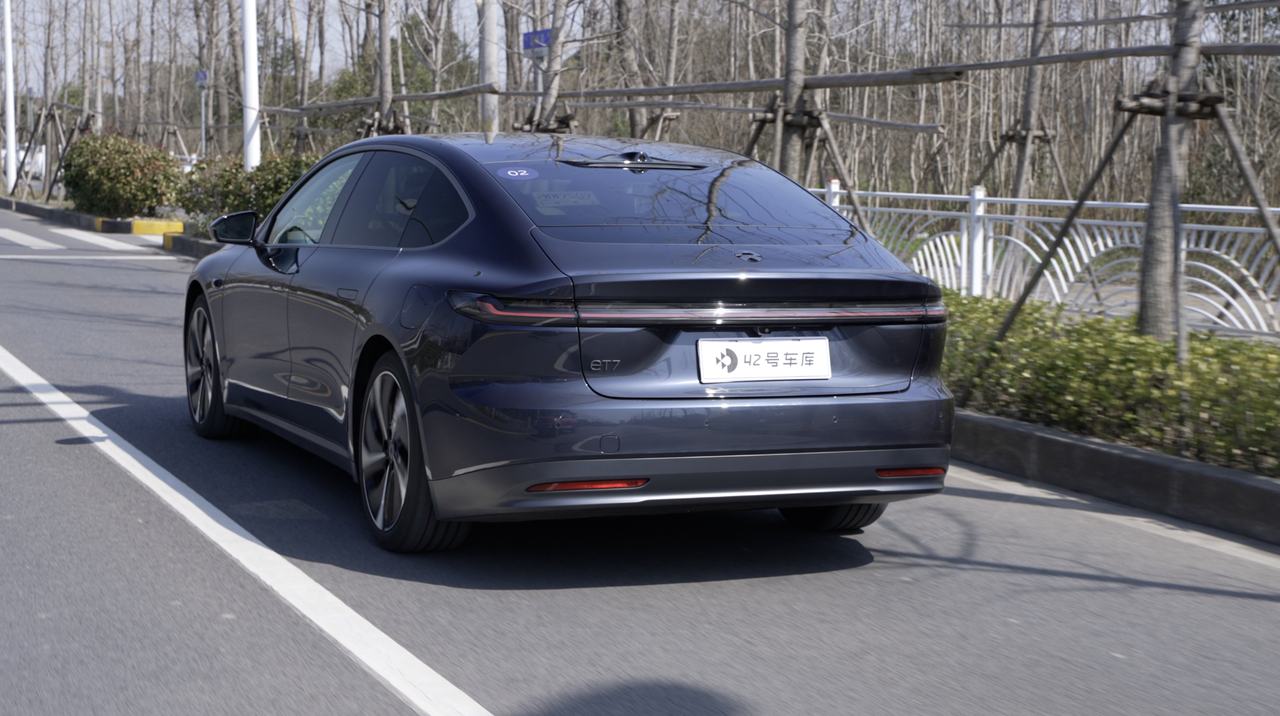
Riding comfort
As usual, when we run 42Mark, after sitting in the EC6 for a few hours, I always feel sore in the waist and back. On the other hand, after sitting in the ET7 for about 3 or 4 hours, my body honestly told me that it wants to keep sitting for a little longer.
The front seats have ventilation and heating, and all 14 adjustment functions are electric, including two-way electric leg support adjustment, which is much more advanced than the manual push-pull type in the 56E.
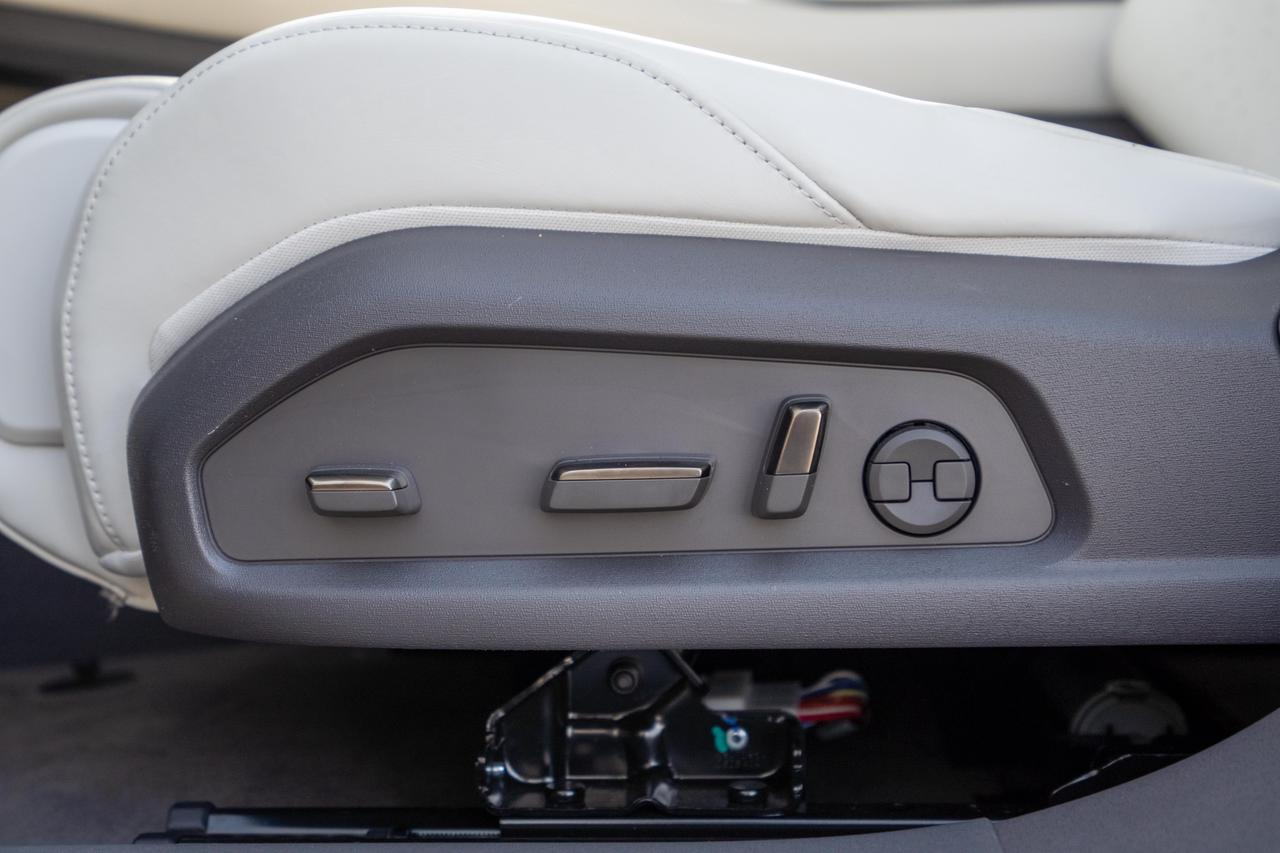
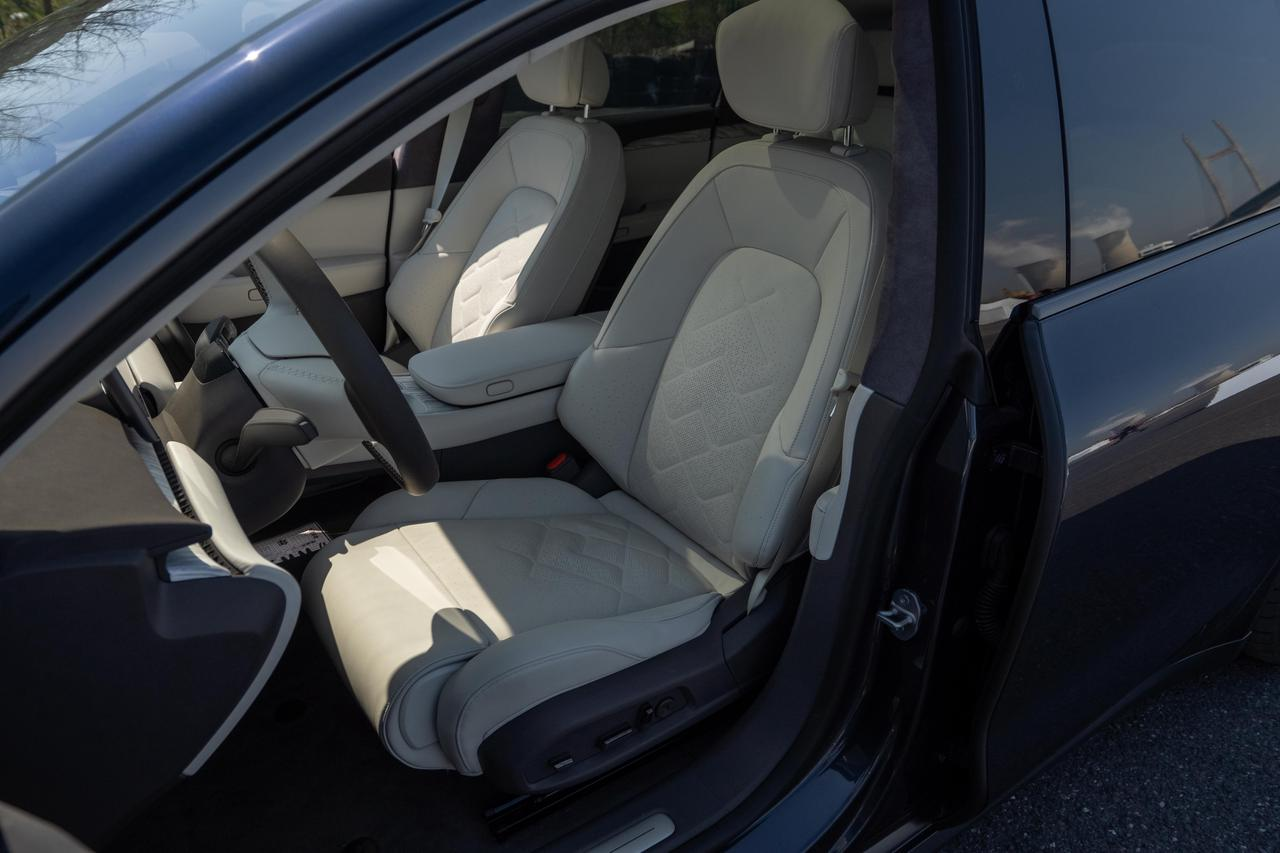 The most impressive feature of ET7 is the massage function for the seats. Unlike the airbag-style massage in other models, ET7’s massage component is a genuine roller that can truly massage your back.
The most impressive feature of ET7 is the massage function for the seats. Unlike the airbag-style massage in other models, ET7’s massage component is a genuine roller that can truly massage your back.
As an executive sedan, all the functions of the front seats are also provided for the rear seats. Rear passengers can also enjoy heating, ventilation, and massage functions. Yes, this is standard across the entire series.
In terms of space, the front seats are suitable for me (175 cm tall and 70 kg), while the rear seats provide 63 (175 cm tall and 80kg) of seating space.
The legroom is very abundant, and there is a distance of 4 fingers between the head and the ceiling. Although the headroom is not particularly spacious, the panoramic sunroof is quite transparent, so there is no obvious sense of oppression.
The only regret is that in order to be compatible with the battery swap system and use the same battery as the ES8, the overall height of the platform is still relatively high, and the posture of the legs is not particularly relaxed.
Fortunately, the cushion is particularly long, providing good support for the thighs. We secretly took out a tape measure and tested the length of the cushion, which is about 54 cm long, indeed a relatively long cushion.
When I experienced the rear seats of ET7, I was unfortunately sandwiched in the middle. So I seem to have found a flaw in the ET7 rear seats-the headrest in the middle of the rear seat is too low. If it were a 4-seater, I could understand. As a standard 5-seater, the low headrest in the middle is not very safe.
I even experienced a zero-to-one hundred acceleration in this position, and the acceleration close to 1 G instantly tilted my head back, even giving me a feeling of being rear-ended. If you don’t have a neck as thick as an F1 driver, I don’t recommend that you experience intense driving in this position.
Putting aside this issue, ET7 still gave me a very transparent riding experience, especially in the rear seats. Although ET7’s sunroof is also dark UV-resistant glass, compared with Tesla and XPeng, ET7’s glass color is much lighter. Moreover, the ET7’s windows extend particularly well, and there is a not small triangular glass next to the headrest in the rear seat, which is also covered by the sunroof.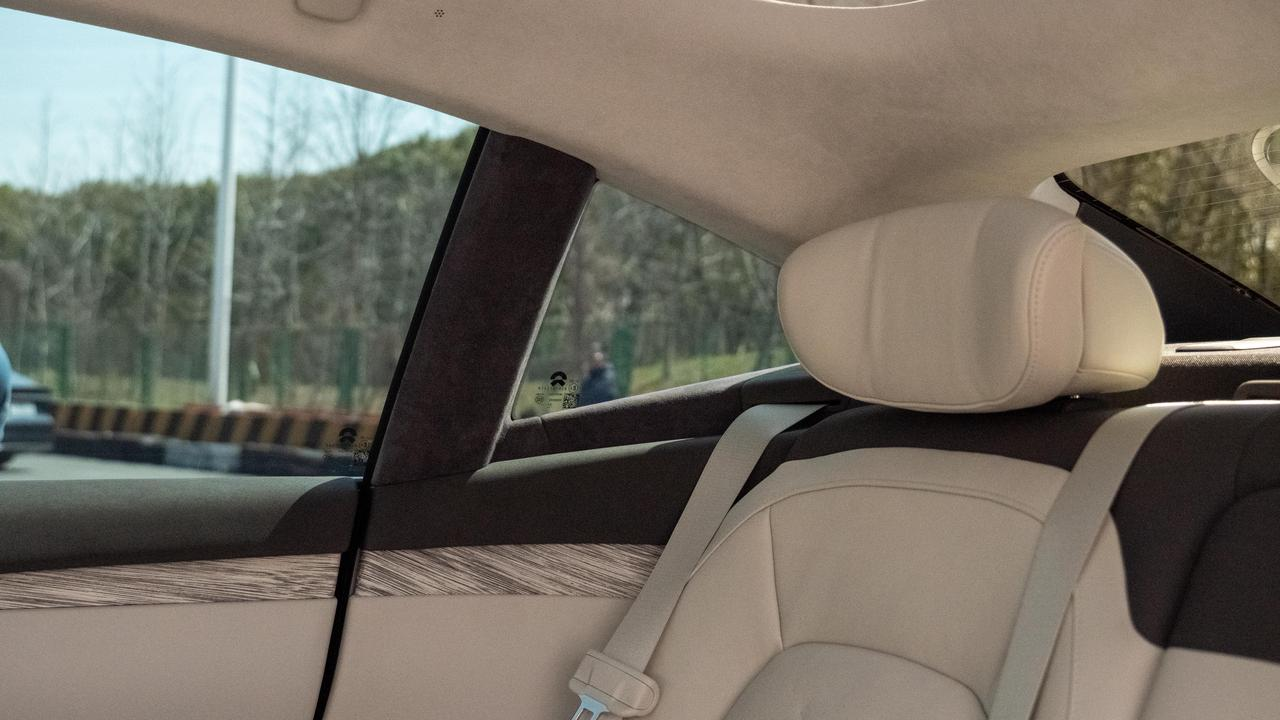
Gradually, the time has come to the night. As the headlights turn on, the screen switches to dark mode, and the ambient lights inside the car are also turned on, which outline the lines of the vehicle interior with these 256 colors of ambient lights.
Listening to the music surrounding me, sitting on a soft seat and pressing down the accelerator pedal lightly, I was inspired to think: Did the ET7 really stand out among the 56E models?
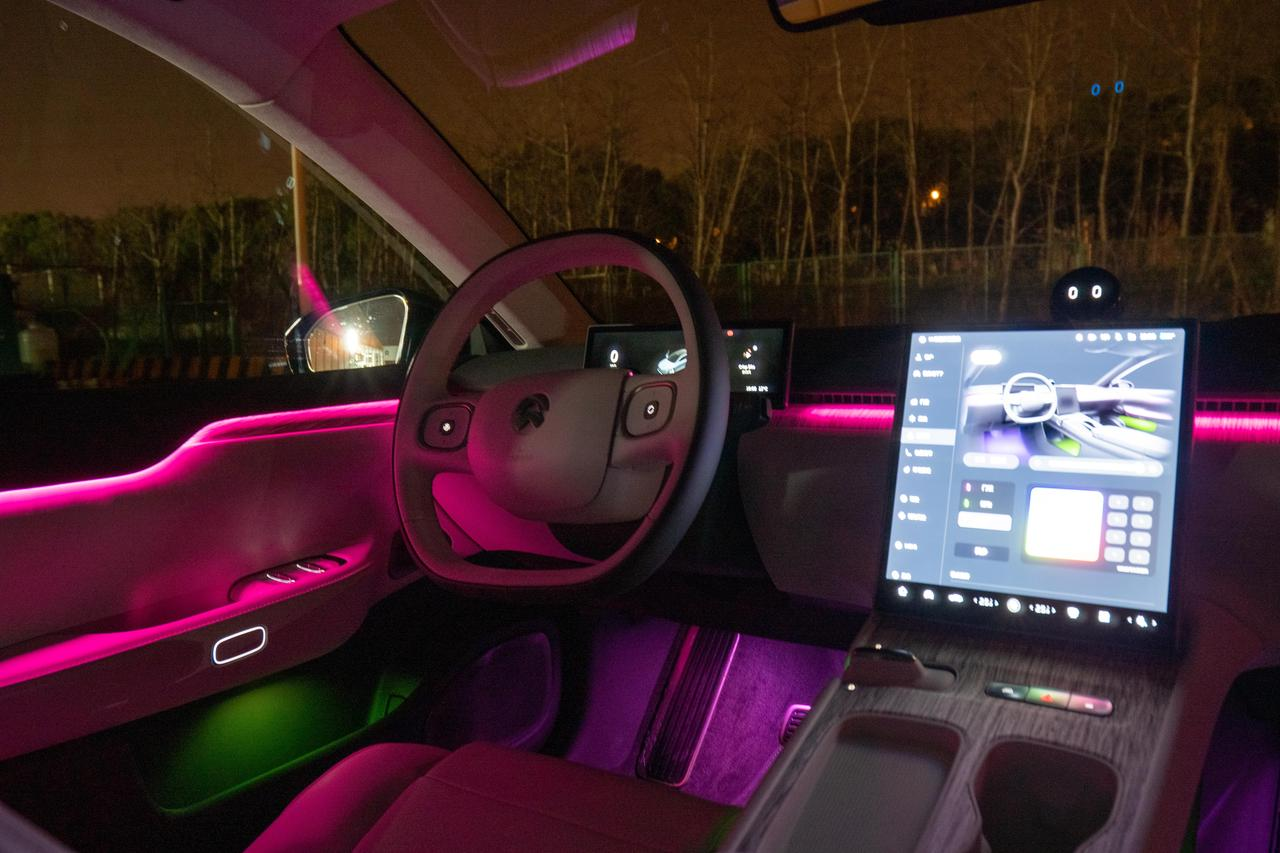

Conclusion
My answer is yes. With the improvement of NIO’s energy replenishment system, the increase in battery swap stations, and the improvement of range, completing an energy replenishment in 5 minutes can already dispel the range anxiety of most NIO owners.
Starting from 448,000 yuan, exempting the cost of purchase tax and license plates, and equipped with a bunch of comfort features, plus a significant improvement in mechanical quality, the ET7 has the real capability to take market share from traditional gas-powered executive cars like the 56E.
Here, I also look forward to the arrival of the end of March and early April. Today’s test drive gave me a basic understanding of the ET7, but more detailed experiences cannot be felt in just one day.
After one month of improvement, I will continue to test the assisted driving and energy consumption performance of the ET7. Let’s see what kind of role the lidar on top of the ET7 can play and how much the application of silicon carbide can reduce energy consumption for the 180 kW front permanent magnet synchronous motor used in daily driving.
What I am looking forward to even more are not only the delivery of the ET7. There are also the ET5 that NIO promotes as being aimed at young people and with high volume, and the just-revealed ES7. As for why people still buy gas-powered cars now? Let’s wait and see for a while, and not rush to conclusions.
Finally, welcome to join our 42 Garage ET7 circle, where everyone has left the latest news about the ET7 and memories of their attention to the ET7. If you want more timely communication, you can join our community by clicking the link.
This article is a translation by ChatGPT of a Chinese report from 42HOW. If you have any questions about it, please email bd@42how.com.
